April 18, 2024
Read part 1 here.
Thick fog greeted me in the darkness of Lebanon, Kentucky, as I stirred from my hotel bed. Quite to start my adventures, I dressed and stuffed down a Hampton Inn waffle. I recently joined Postcrossing and drew an address in China and was hoping I could print it out for the postcard, but all they could offer me for a business center was a disconnected printer sitting in a dark closet. (Definitely the worse Hampton Inn I’ve stayed in was the one in Lebanon…). Okay, address in English it’ll be…
Through the thick fog on curvy, narrow roads I went, driving for about forty-five minutes to where Abraham Lincoln lived for seven years of his childhood, the Knob Creek Farm. The Lincoln family lived on thirty acres of the 228-acre farm, and Abe was quoted to say, “My earliest recollection is of the Knob Creek place.” The family left in 1816 to move to Illinois.

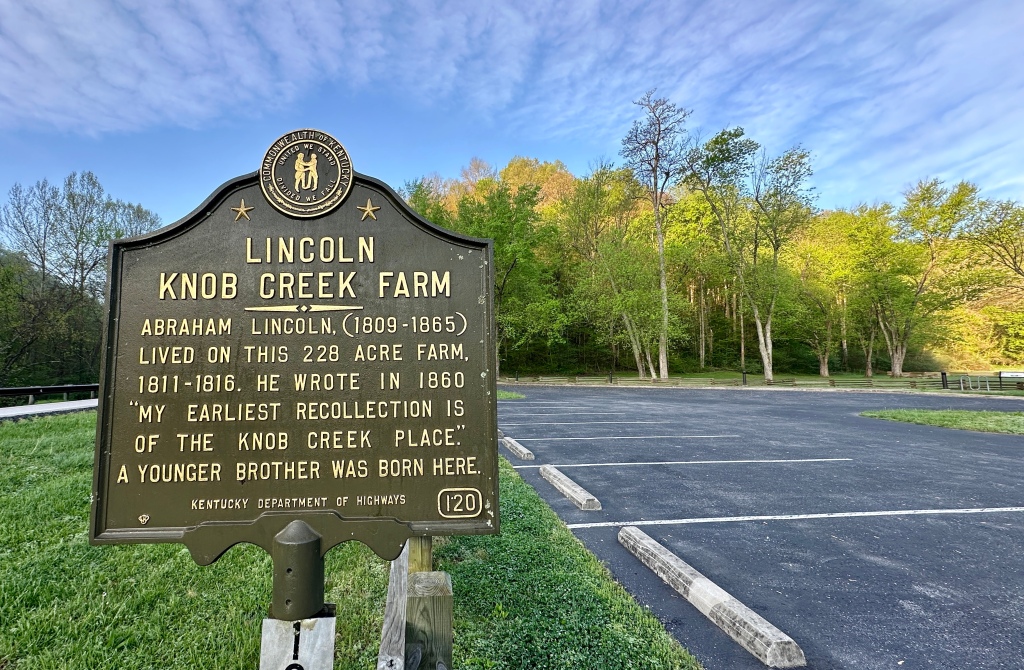
Abraham Lincoln Birthplace National Historic Park is separated into two units, the Birthplace Unit and Boyhood Home (Knob Creek) Unit around Hodgenville, Kentucky. Since I was coming from the east, it made sense to stop at Knob Creek first. Also on site is the Lincoln Tavern, built in 1931 as a memorial to Lincoln. This serves as a visitor center, but alas, is only open on weekends during my visit so I was unable to go inside.
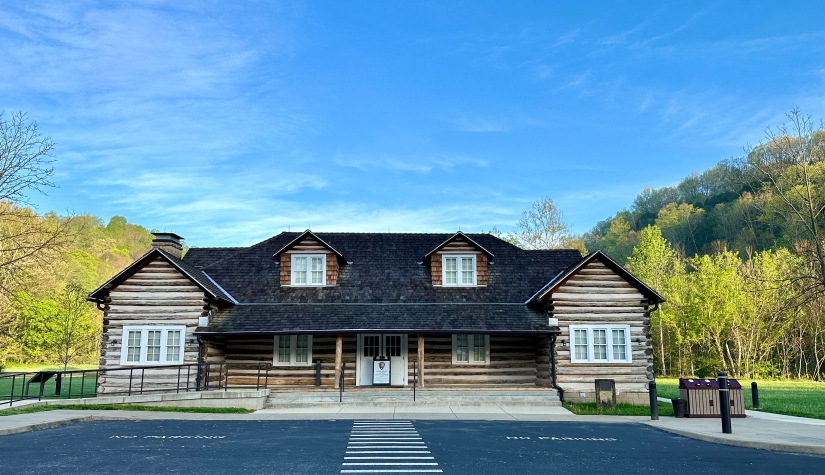
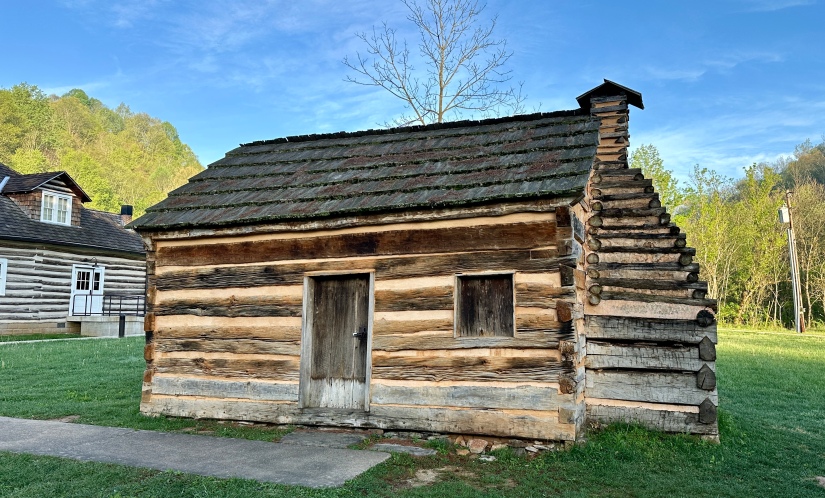
It was a serene morning, loud with bird chatter and occasional road noise. I wanted to squeeze in a short hike, and set out across the mowed field (the very one the Lincoln family farmed while living here) on the trail up to the Knob Creek Overlook. This three-mile round trip hike is rated as strenuous by the National Park Service, and they warn to budget two-to-three hours for this hike. Personally I found these warnings were quite inaccurate – yes, there is a steep hill, but it is doable. I rate it as a moderate hike for those that are not avid hikers.
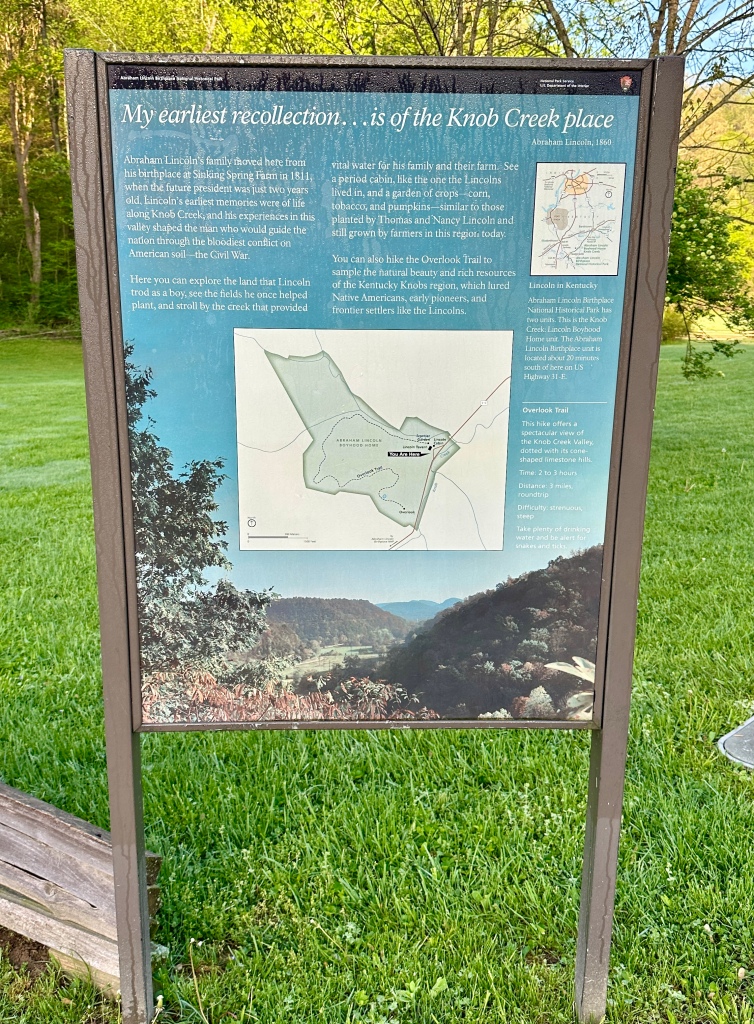
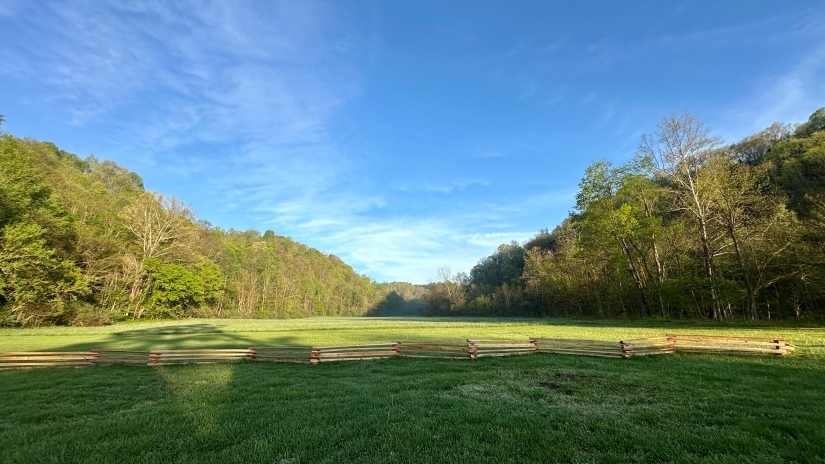
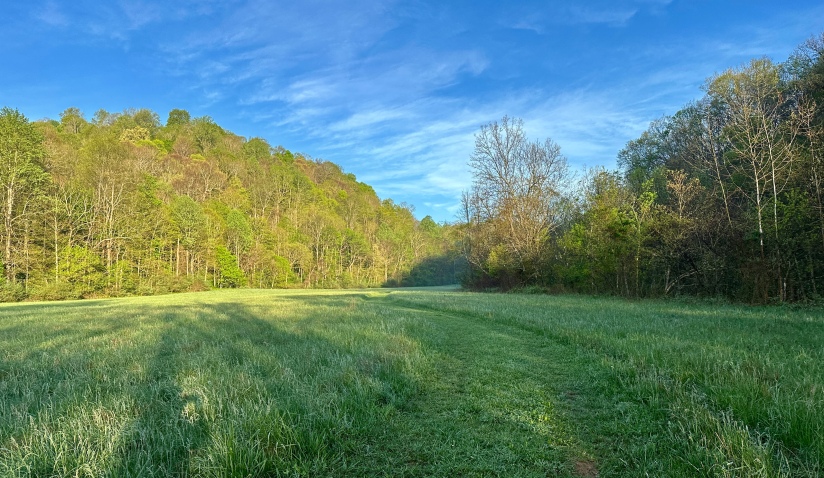
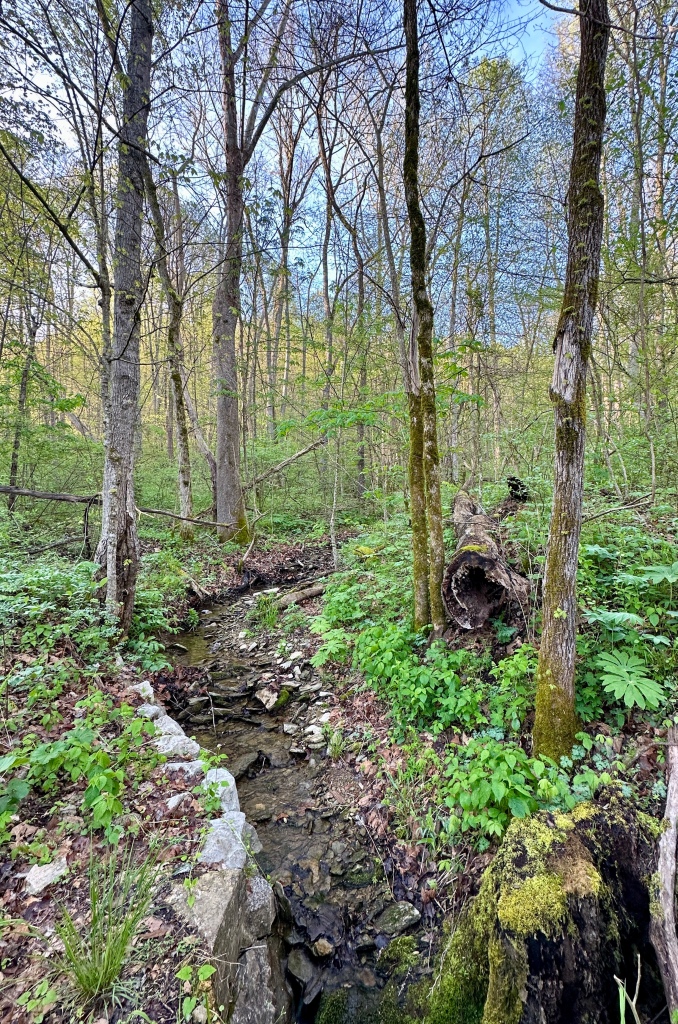
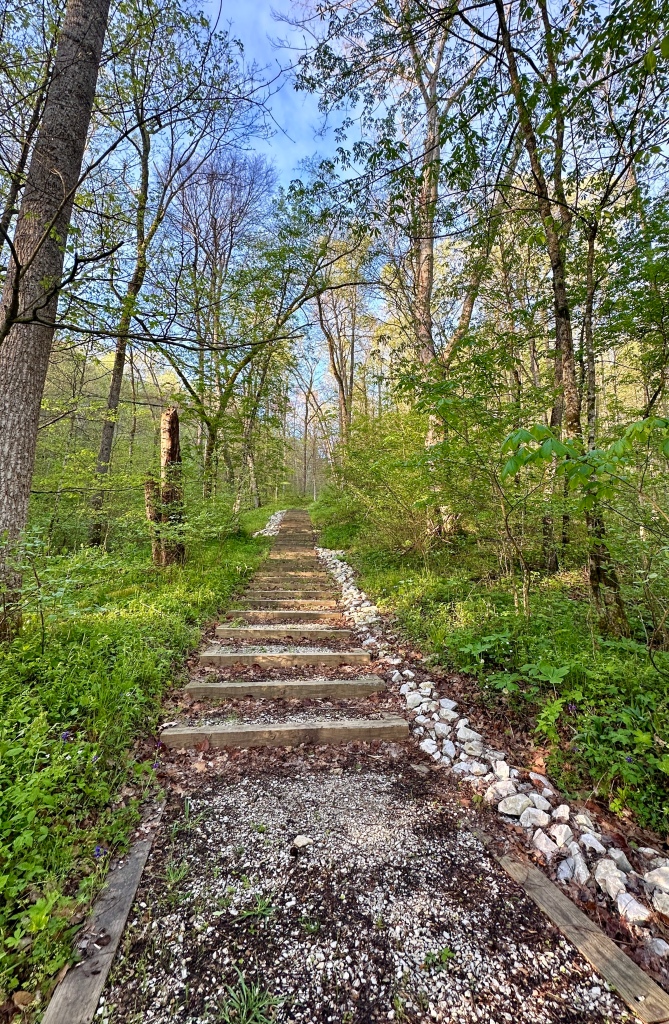
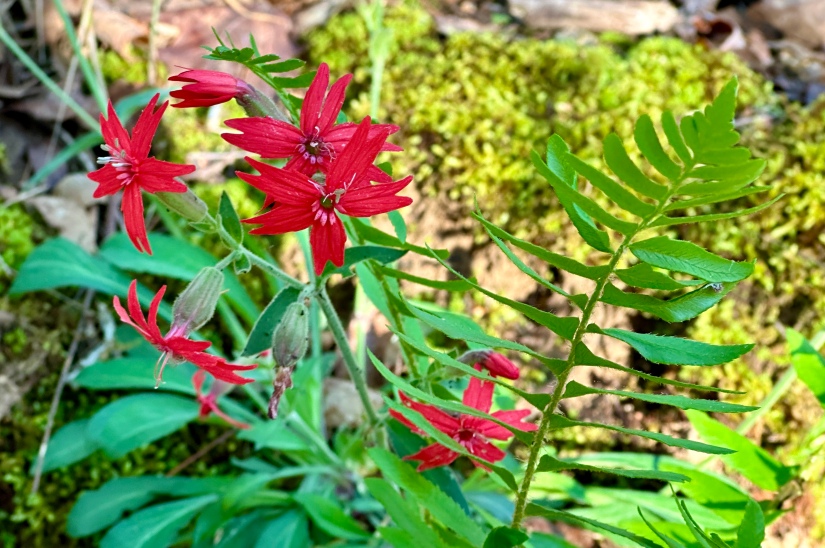
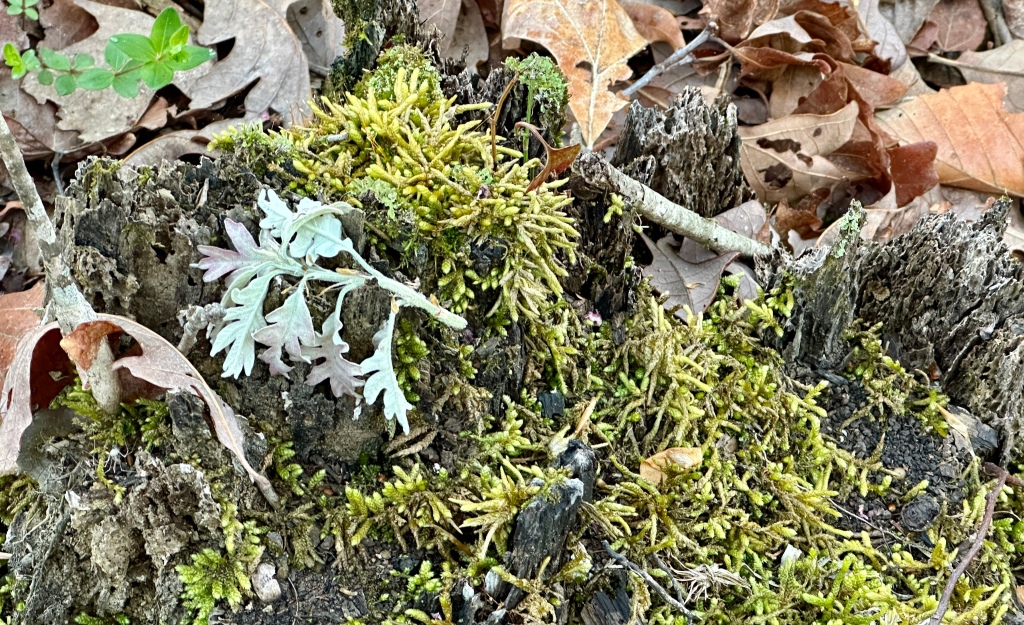
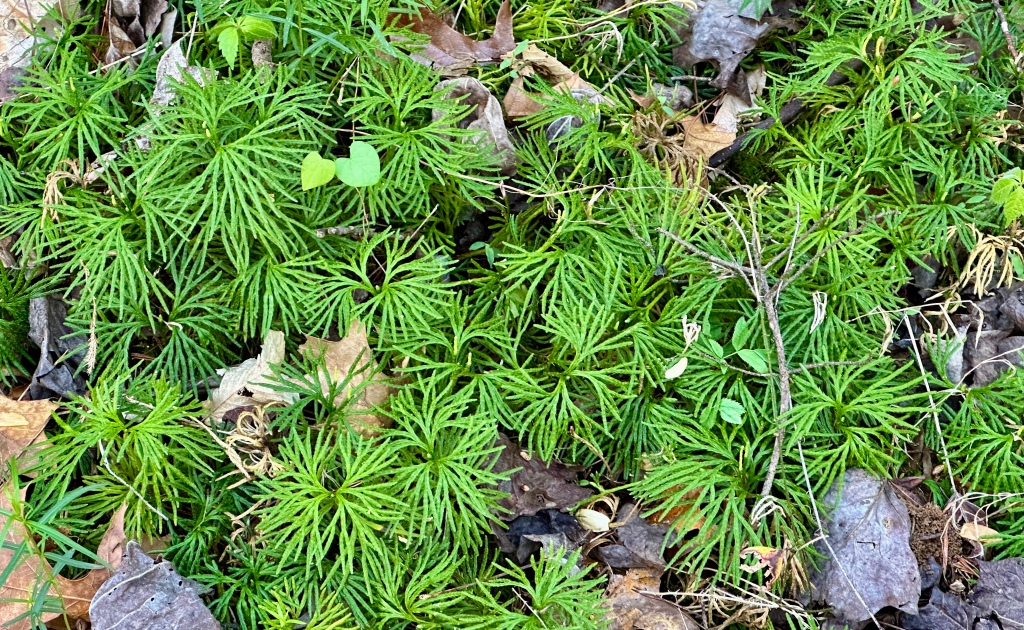
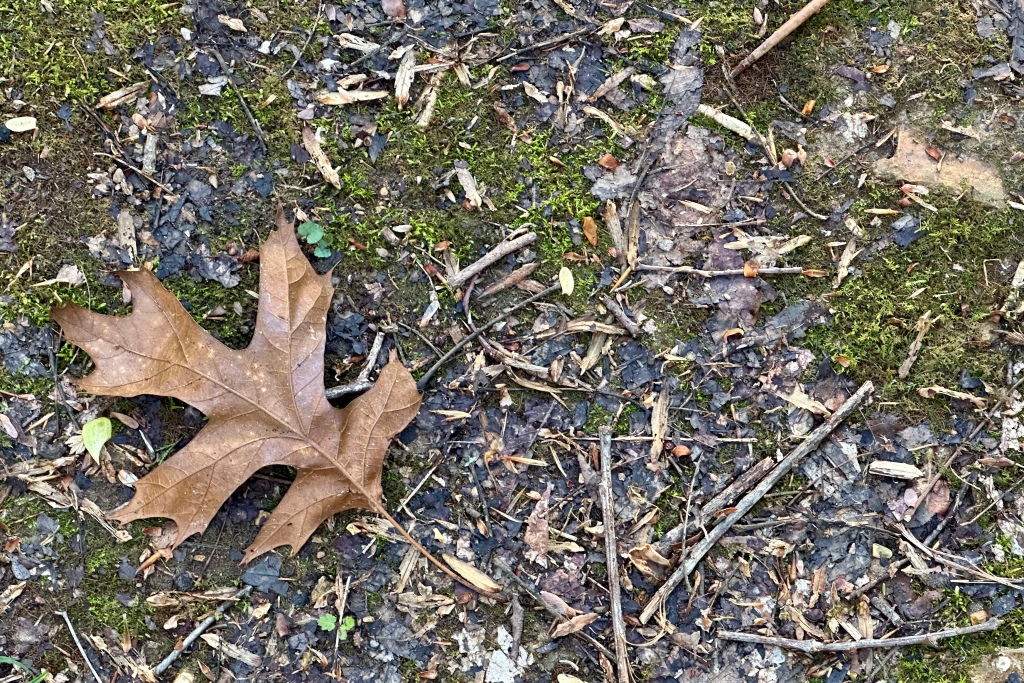
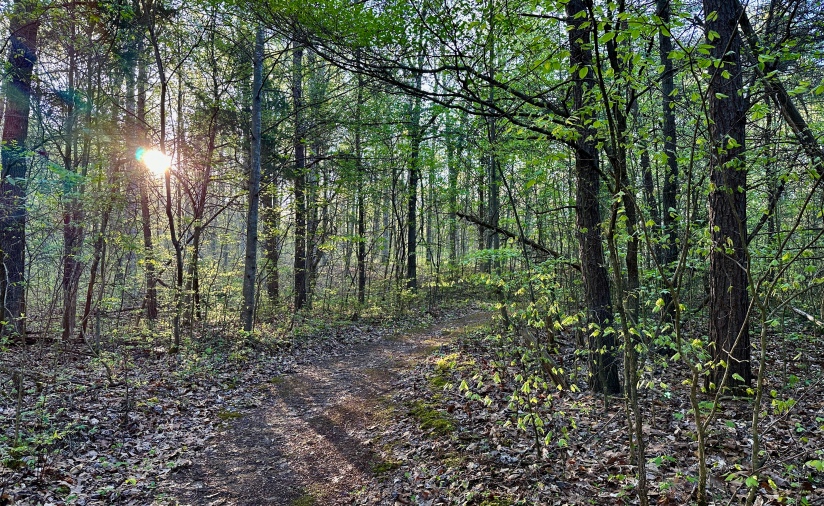
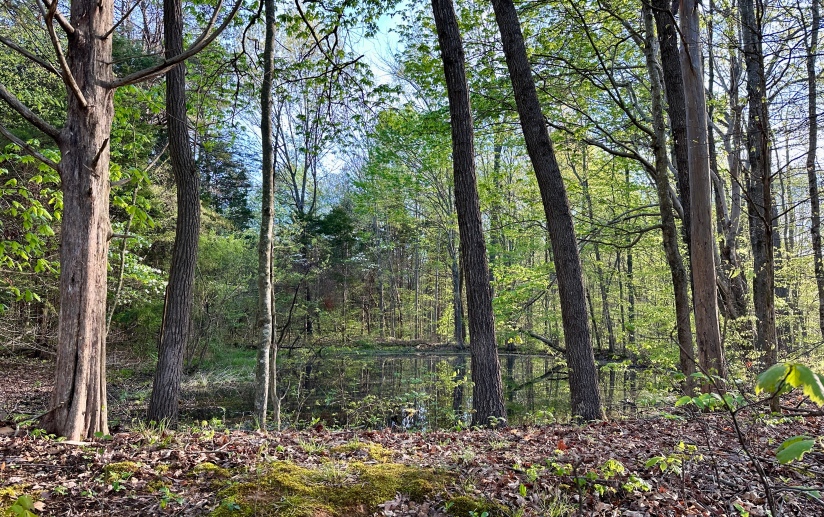
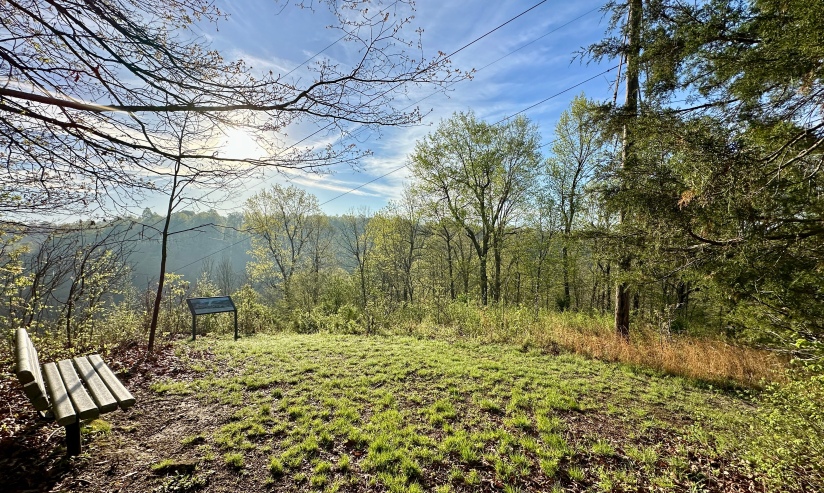
The hike took me a tiny smidge over an hour to complete the 3.13 miles, and the birds never let up the entire hike. I was still the only person at the site by the time I finished up. I’m happy I could do this hike early in the morning to beat the humidity, and it was perfect just being alone with the birds!
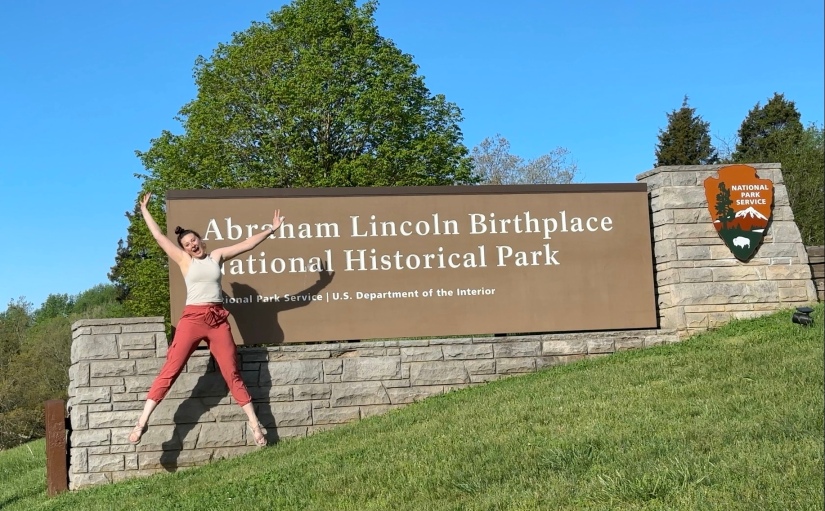
Now it was time to drive fifteen minutes to the Birthplace Unit, location of a mini-Lincoln Memorial (think the one in Washington, DC, and just shrink it in size) which houses the Symbolic Birth Cabin of Lincoln. The main visitor center is also located here, where there are water fountains, restrooms, a museum, park film and gift shop. I swung into the visitor center and was immediately directed to the stamping station (its the pile of passport books that gives me away, huh?). I then watched a bit of the park film before checking out the exhibits.
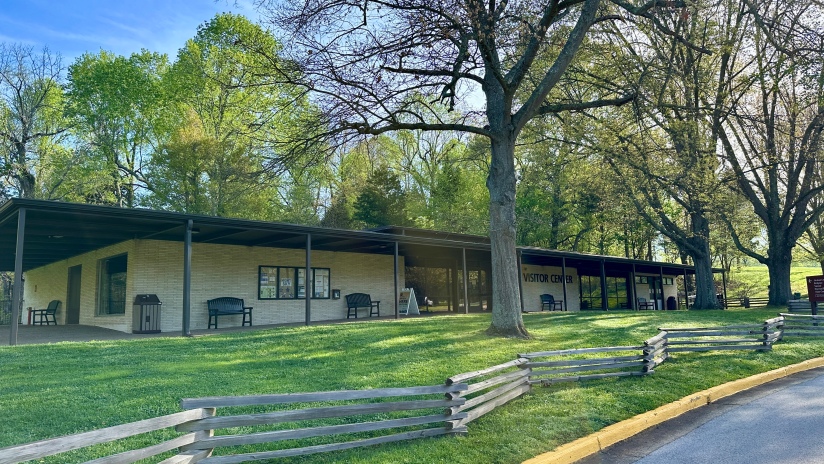
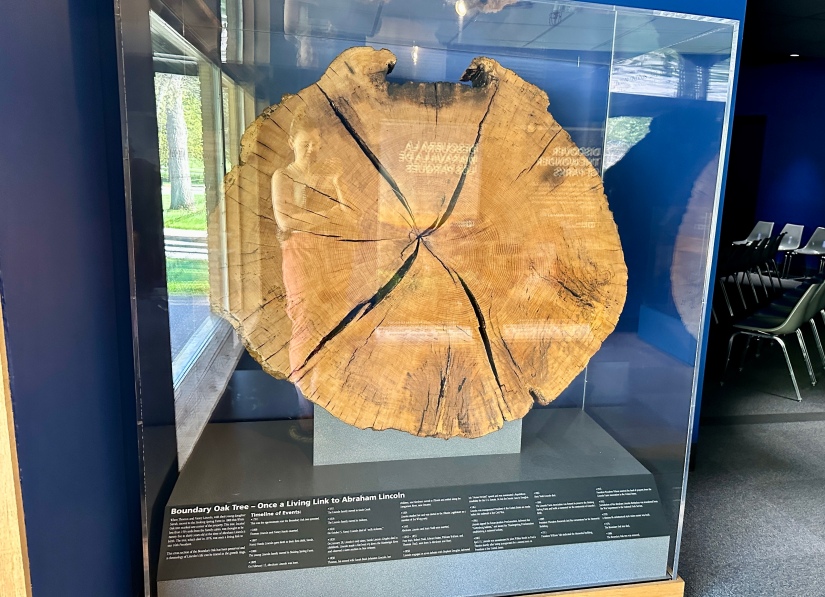
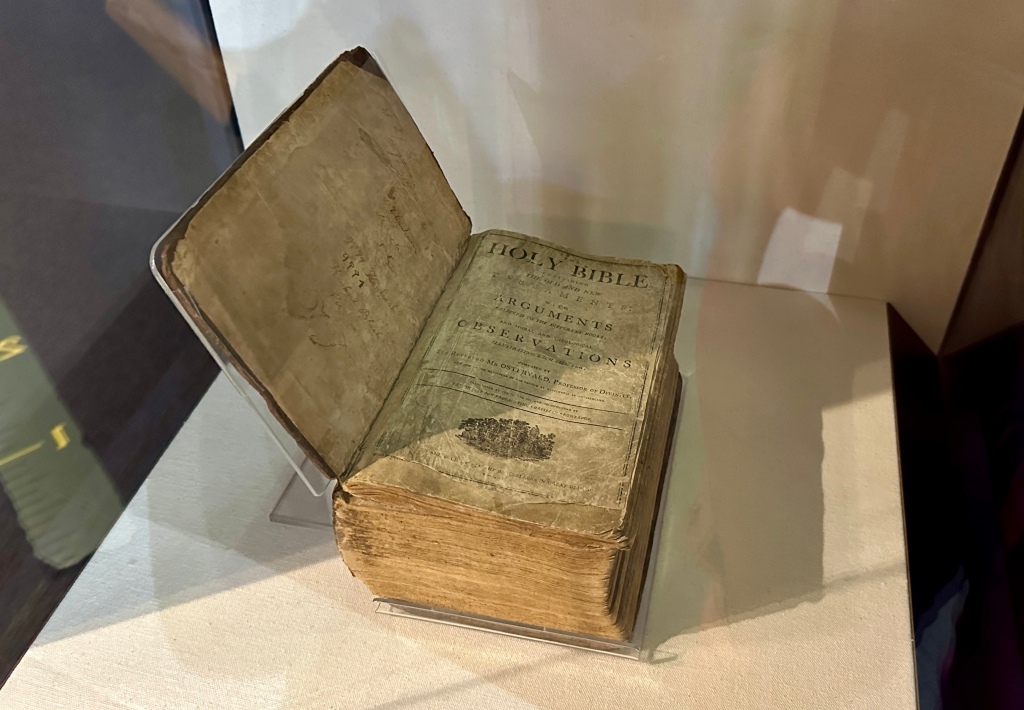
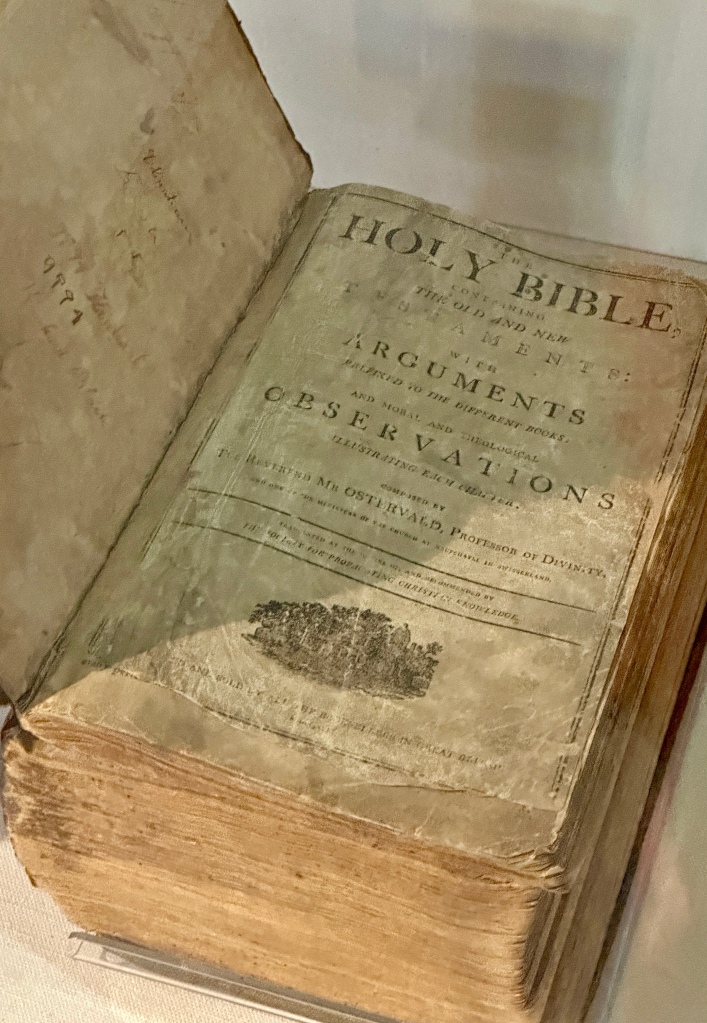
I took the short trek up the stairs to the memorial building and entered to check out the Symbolic Birth Cabin. Then I took the short gravel Boundary Oak Trail before checking out the Sinking Spring.
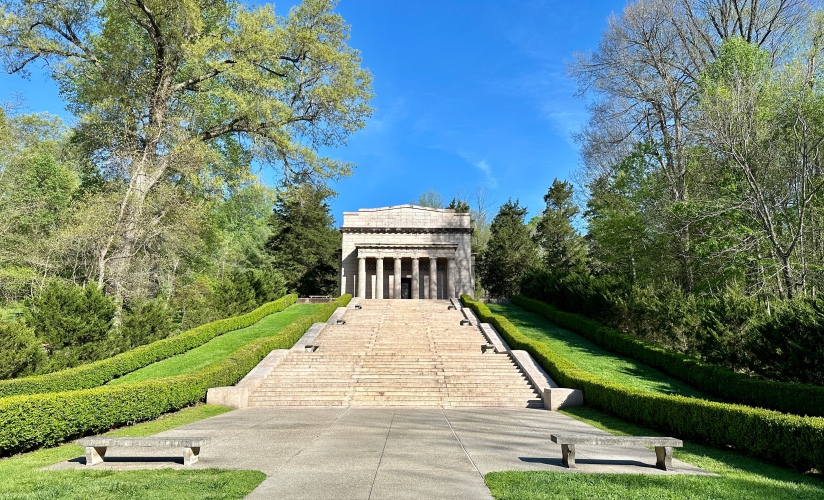
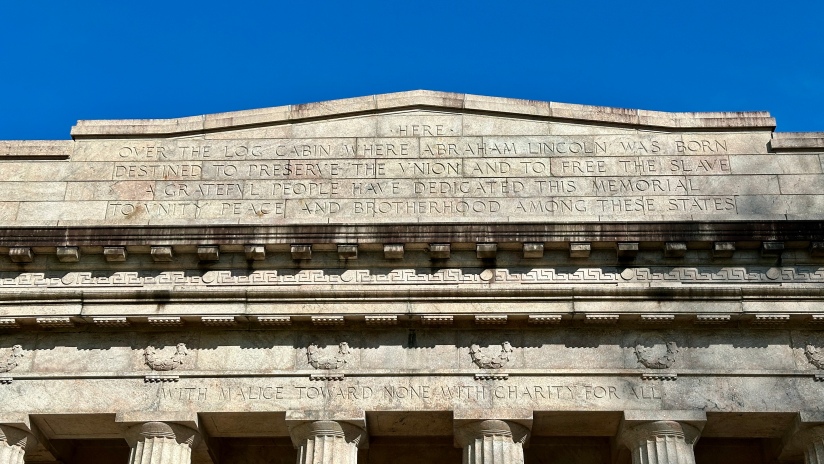
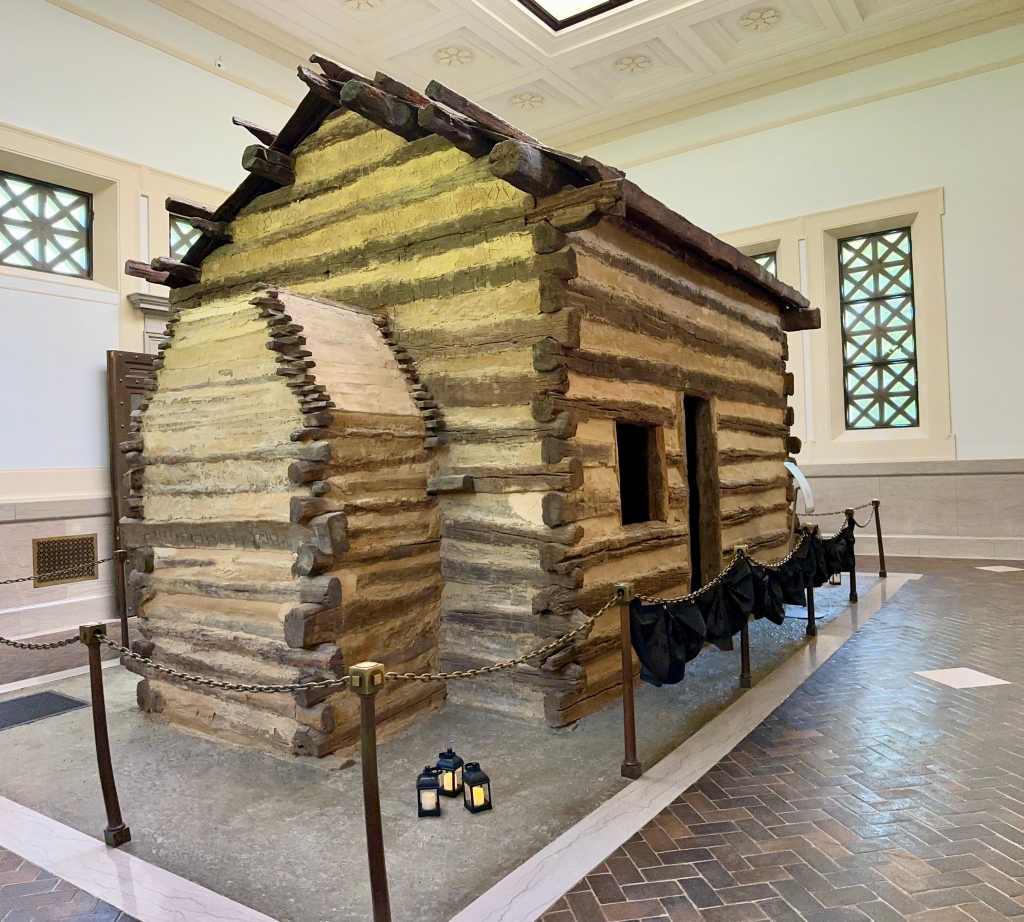
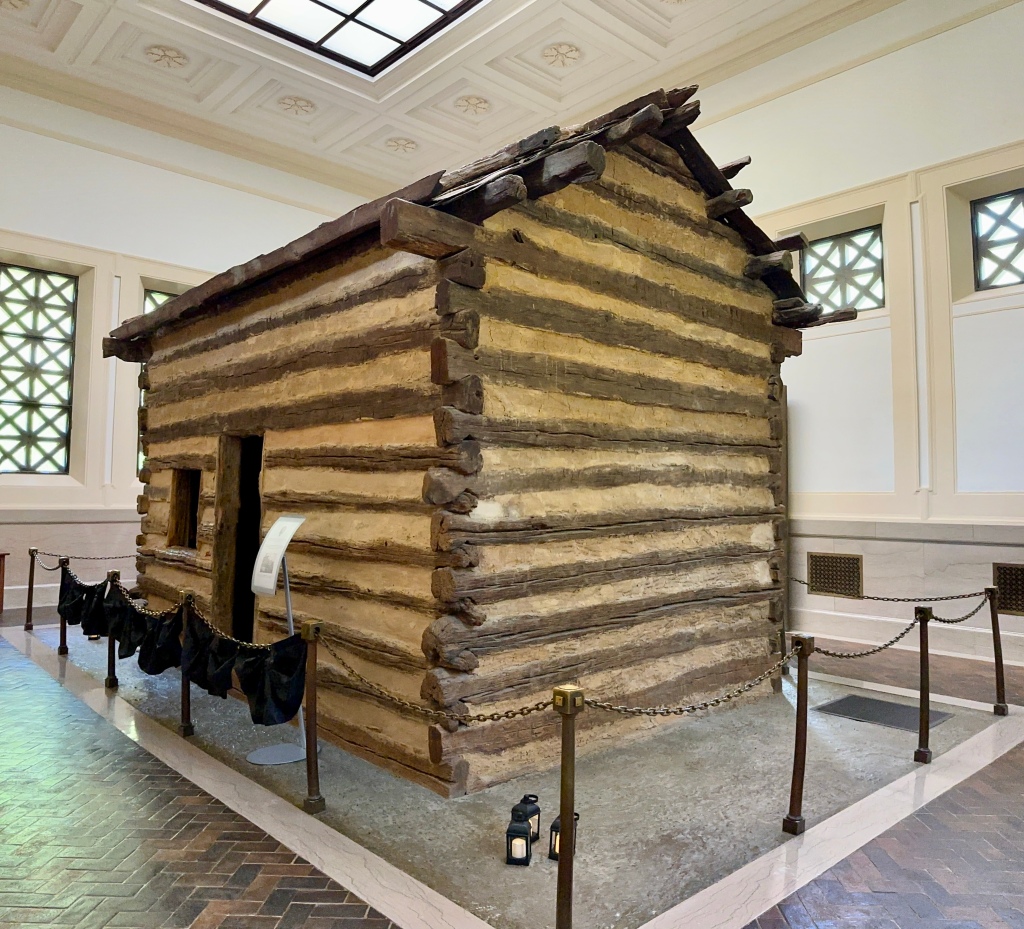
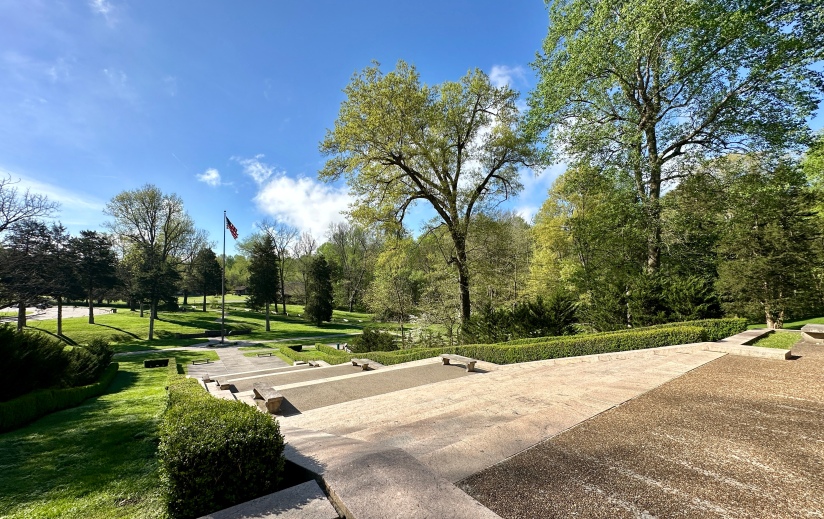
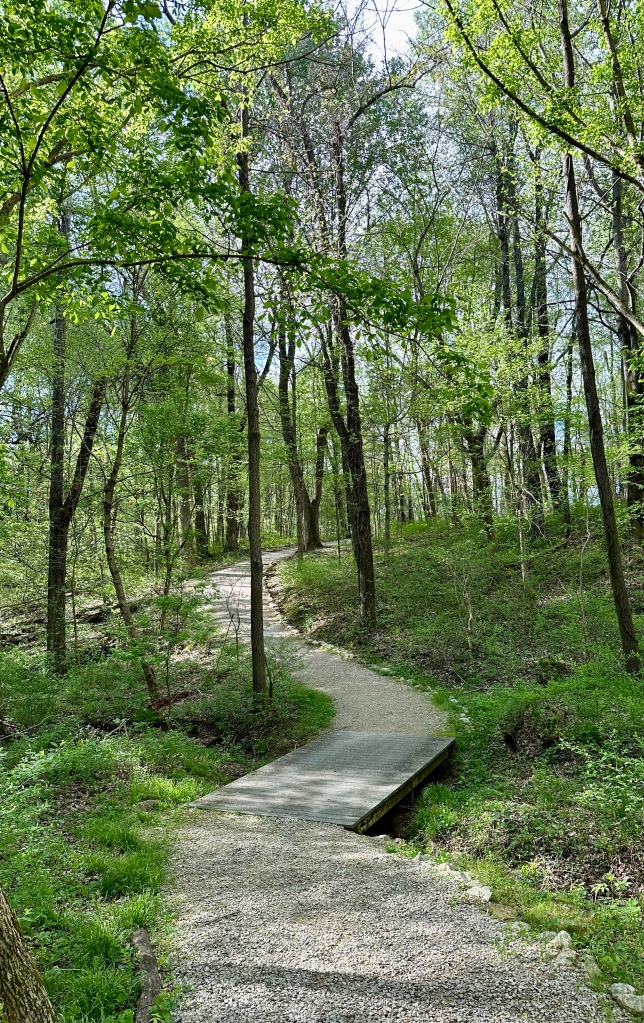
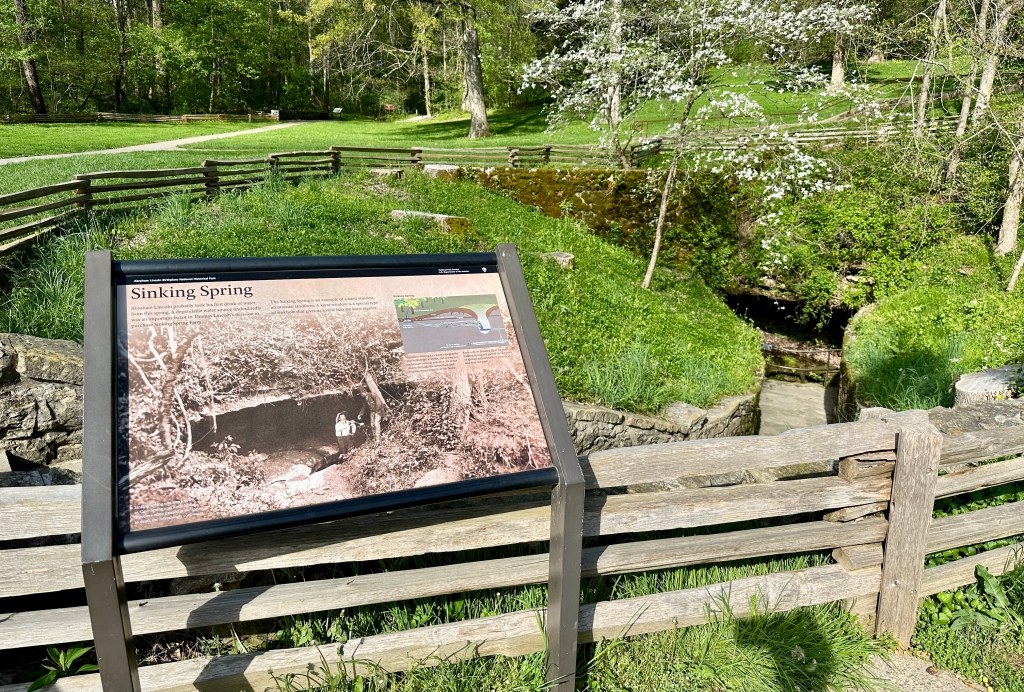
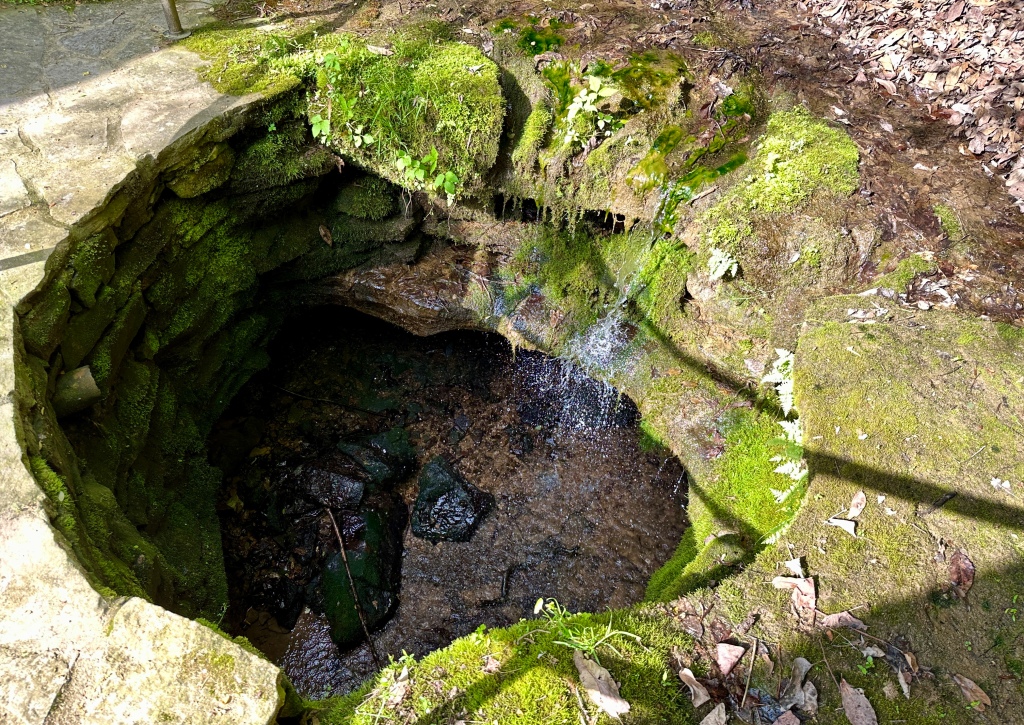
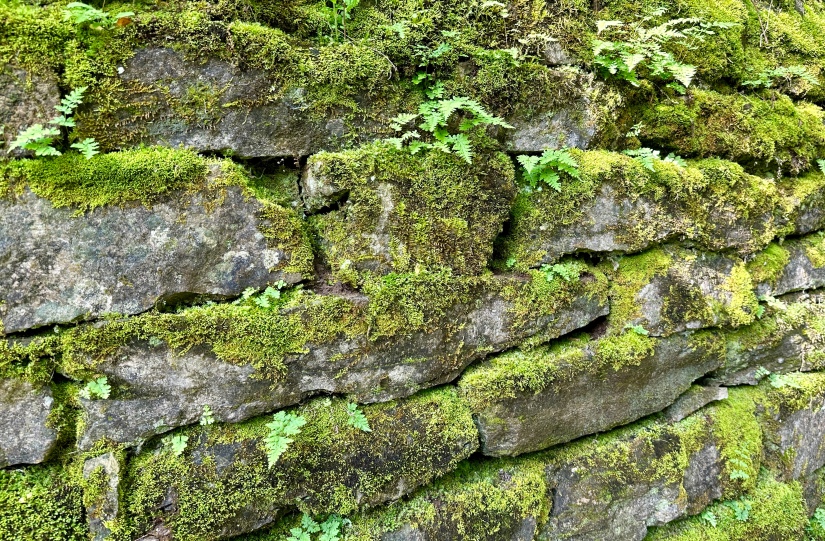
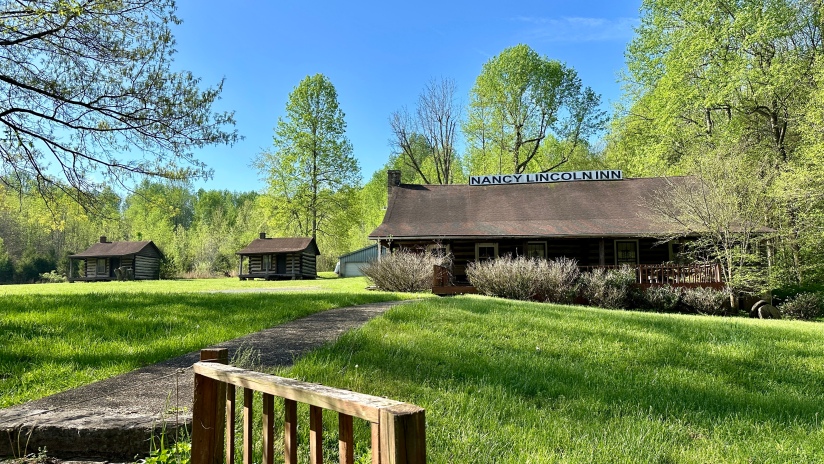
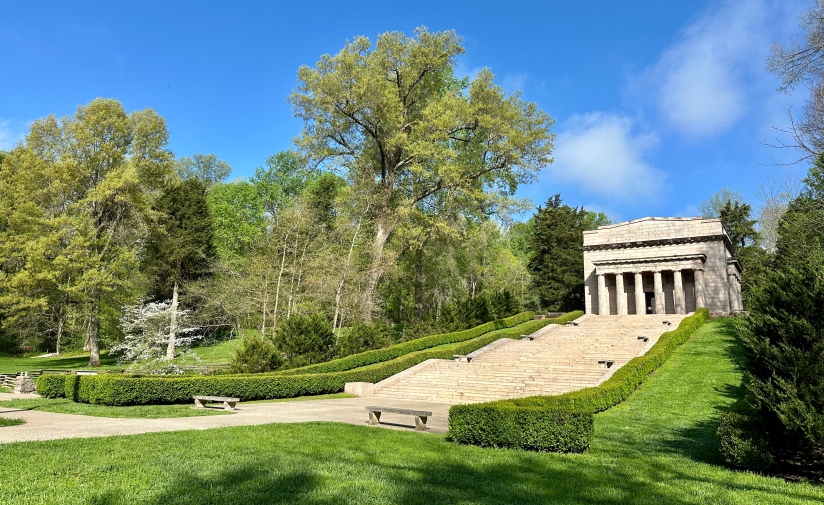
I had plenty of time in my day before my 2:45pm cave tour in Mammoth Cave National Park, so I sat in the car and filled out postcards so I could them mailed later that day. A touch hungry (the Hampton Inn waffle did not do much to satiate me), I googled for some coffee shop options in Hodgenville. I quickly settled on Vibe Coffee, mostly because I saw they offered avocado toast, and I’m a proper Millennial that cannot deny myself avocado toast.
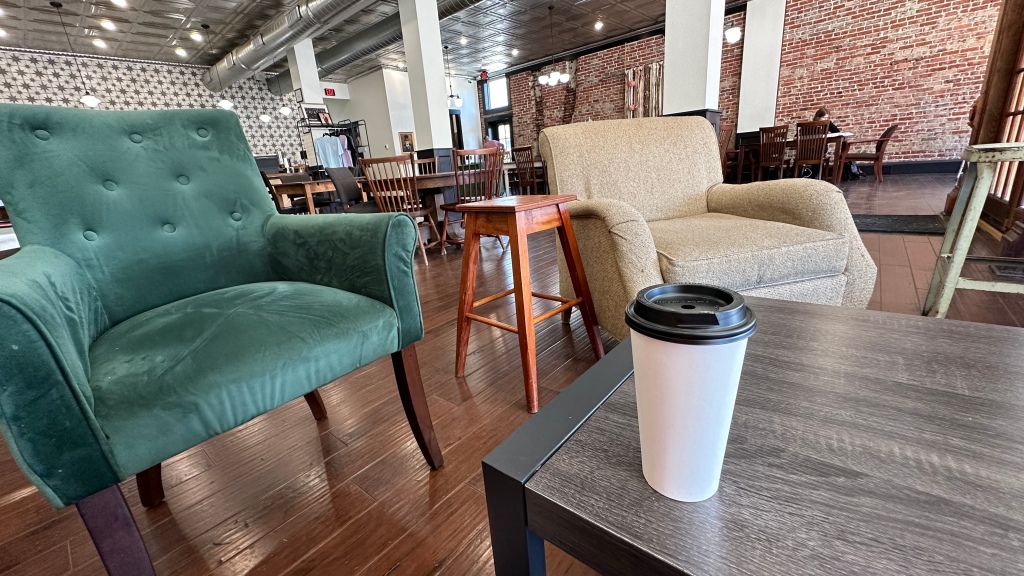

I had a one-hour drive ahead of me down I-65 to arrive at Mammoth Cave. I also crossed into central time zone, so I “gained” an hour. Things were smooth sailing, and soon the entrance sign to the park came into view! Established in July 1941 as a national park, Mammoth Cave National Park is home to the longest cave system in the world, and is also a UNESCO World Heritage Site and International Biosphere Reserve.
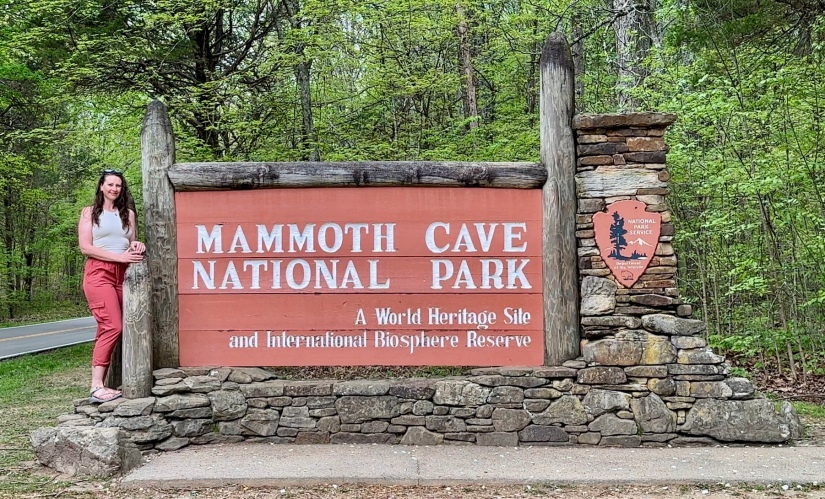
Sharing a parking lot with the entrance sign, I took the short and sweet boardwalk hike to Sand Cave. This cave was the site of a historical tragedy and death of Floyd Collins, an early pioneer of cave exploration in the area. The whole story is summed up by NPS here.
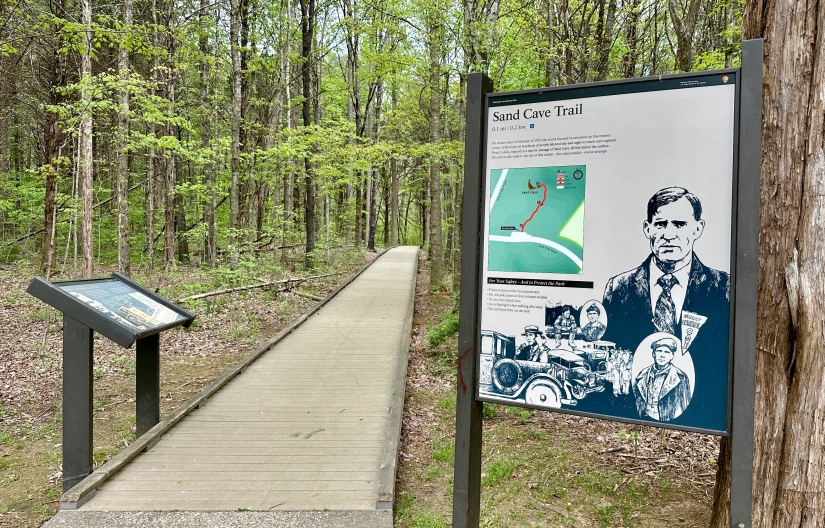
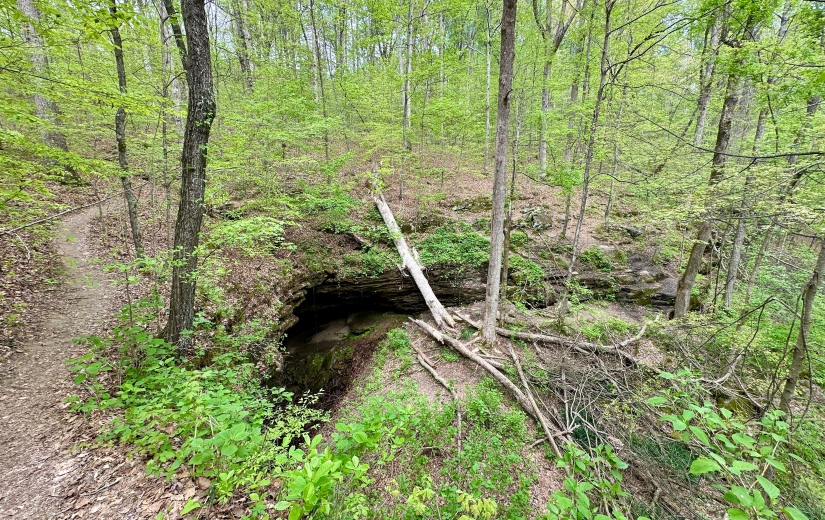
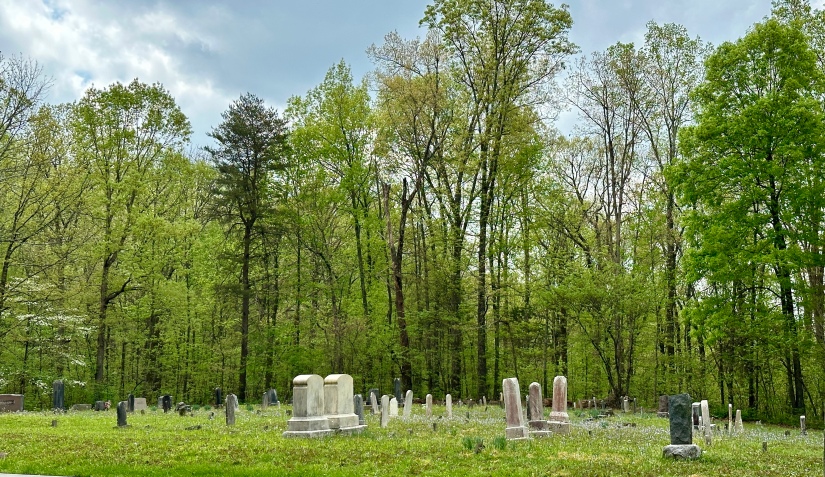
With ample time before my cave tour, I set out to the visitor center to do my normal stamping and souvenir buying activities, and to pick up my tour tickets (and check that Chacos are okay, as Mammoth Cave does have White Nose Syndrome and I am running out of clean shoes to wear in caves out west where WNS has not been detected yet). There are two gift shops in the visitor center, and at the second one I had a great chat with the cashier, Aleta, about adventures. She mused this it was the “calm before the tourist storm” that would be flooding in during the upcoming weeks. Sounds like I timed my trip right!
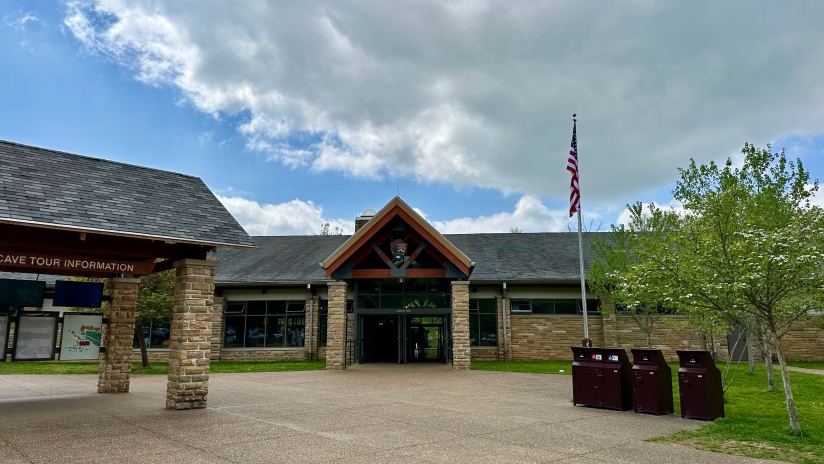
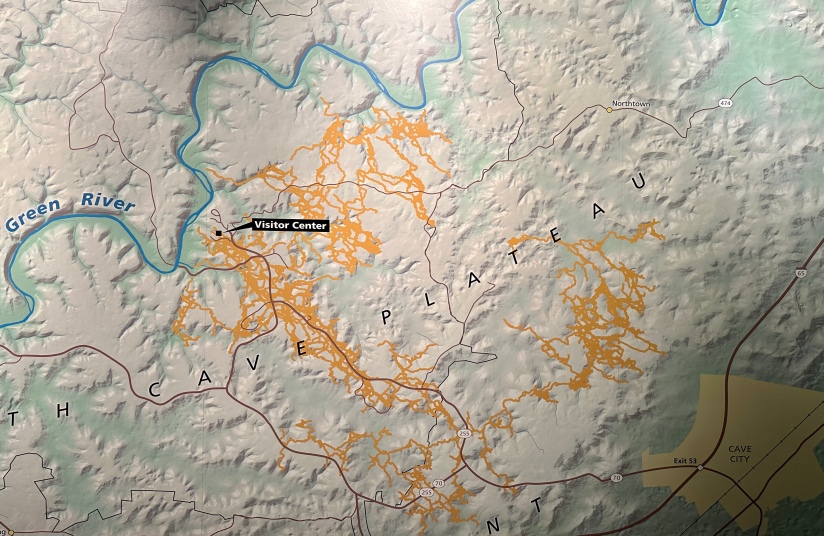
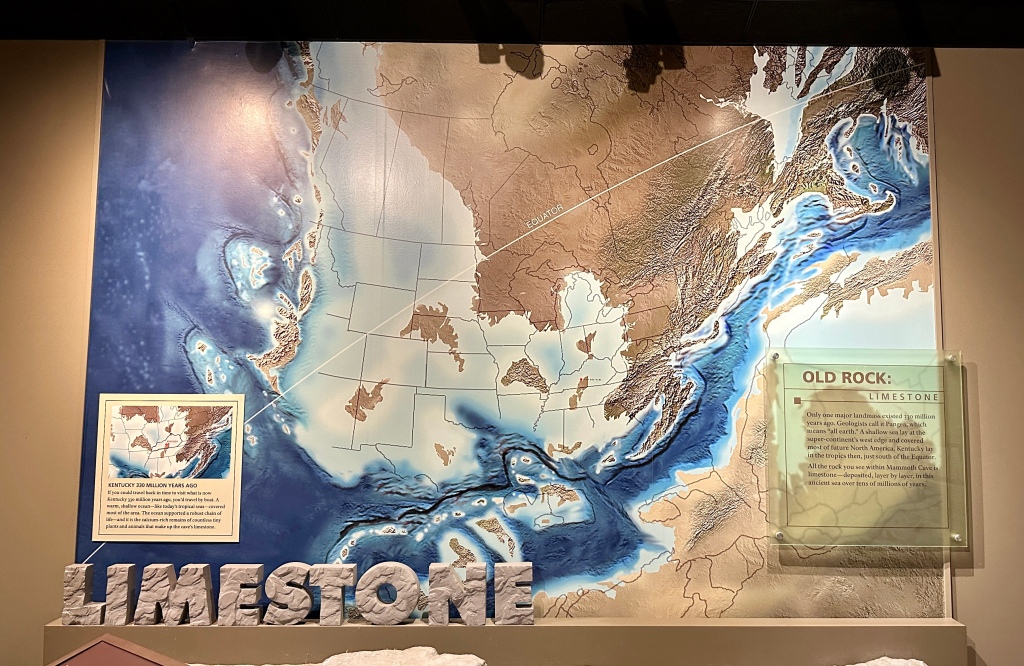
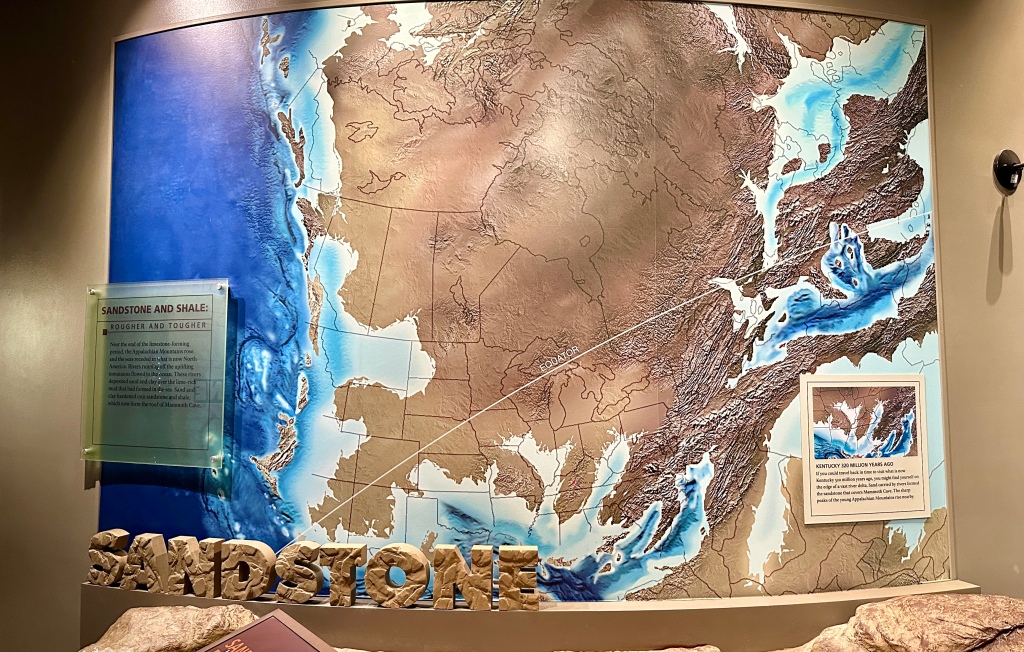
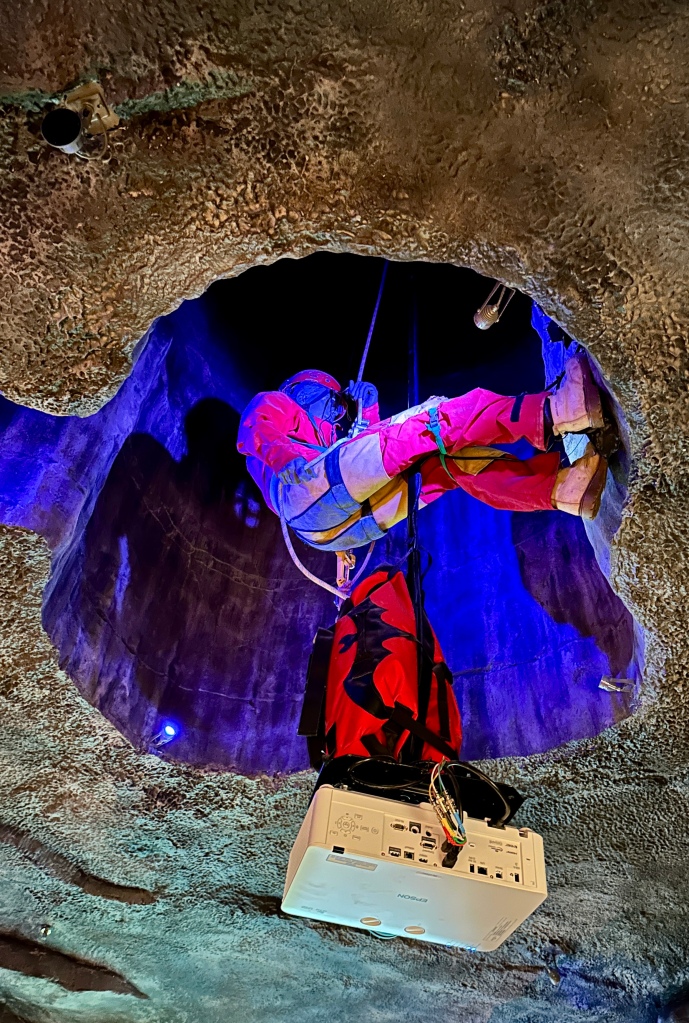
There is a post office at Mammoth Cave, so I dropped off my hoard of postcards to the clerk. It was only barely 1pm, so I decided to see if I’d be able to check into the campground. The friendly ranger waved me in to my home for the night, site #102D (which I reserved in advance).
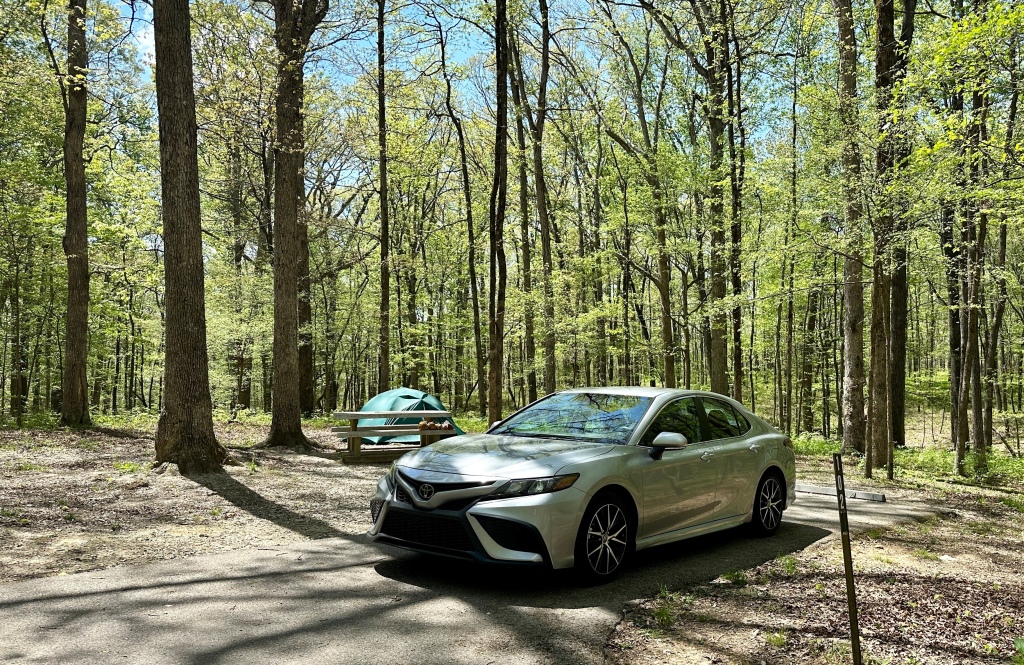
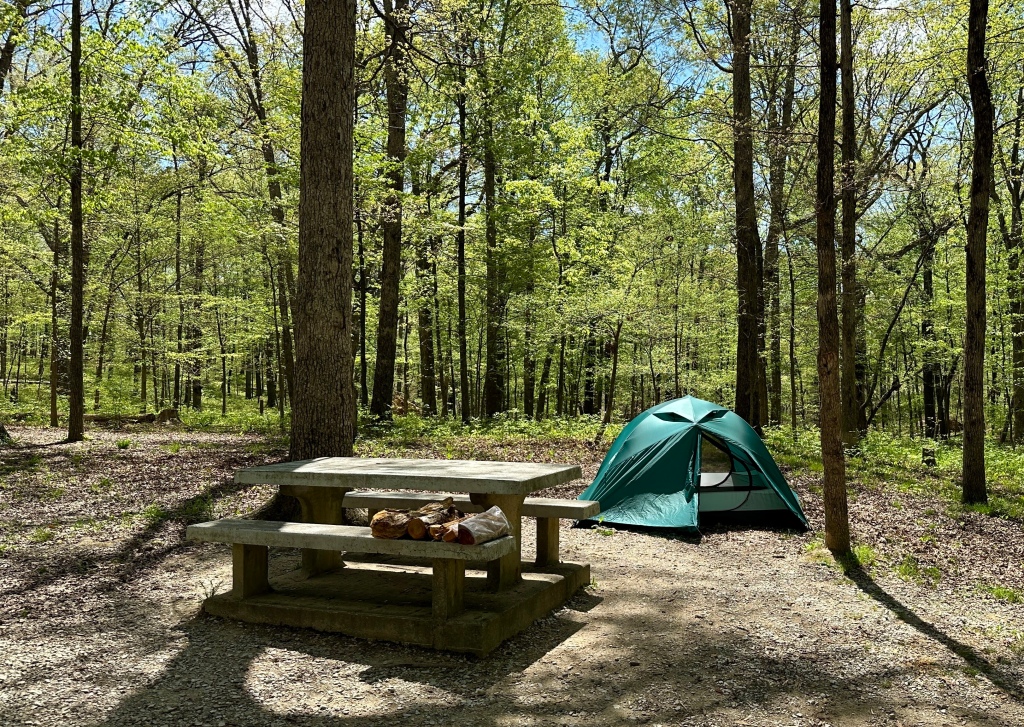
It was hot and humid, but I got my tent set up, sleeping pad inflated, and items tossed in the tent. Caver’s Camp Store was just a short jaunt from my campsite, so I set out in search of baby wipes (which I forgot to pack) and perhaps an ice-cold tea to drink. I discovered there were some outlets available, because I also forgot to pack my battery pack to charge my phone. With forty minutes to kill, I parked myself in the shade to journal and let my phone charge up. I couldn’t wait for the 54 degree cave air!
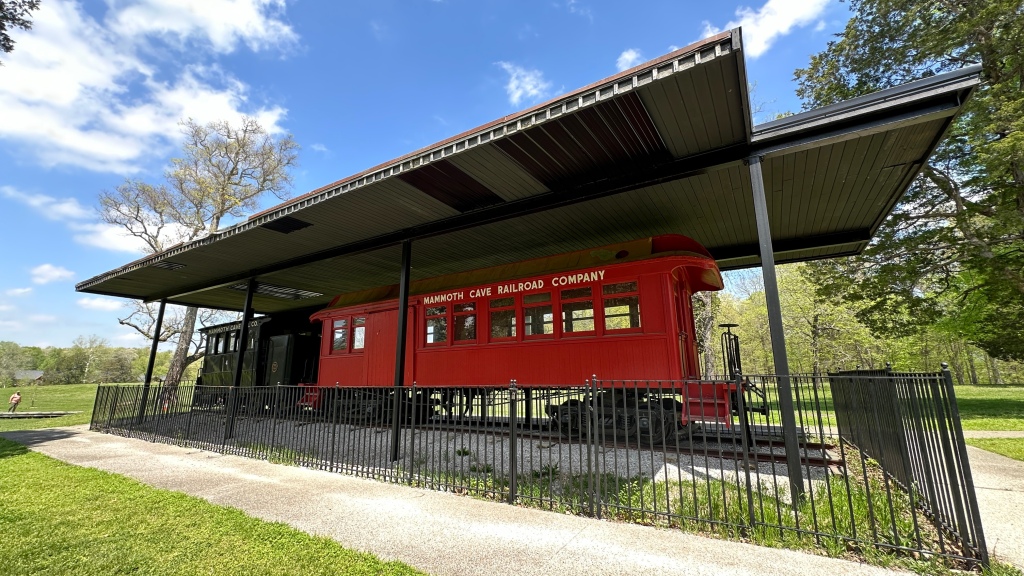
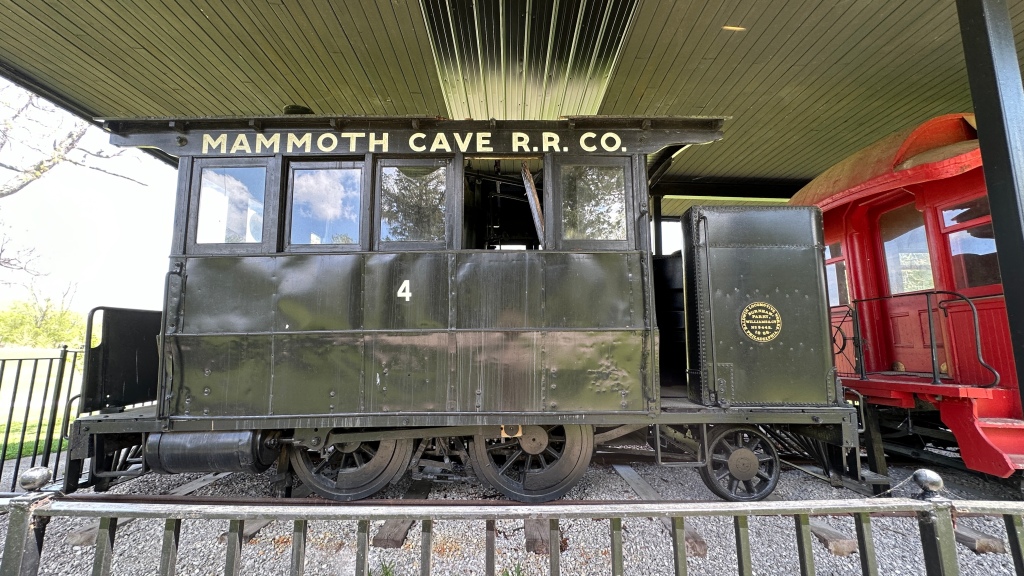
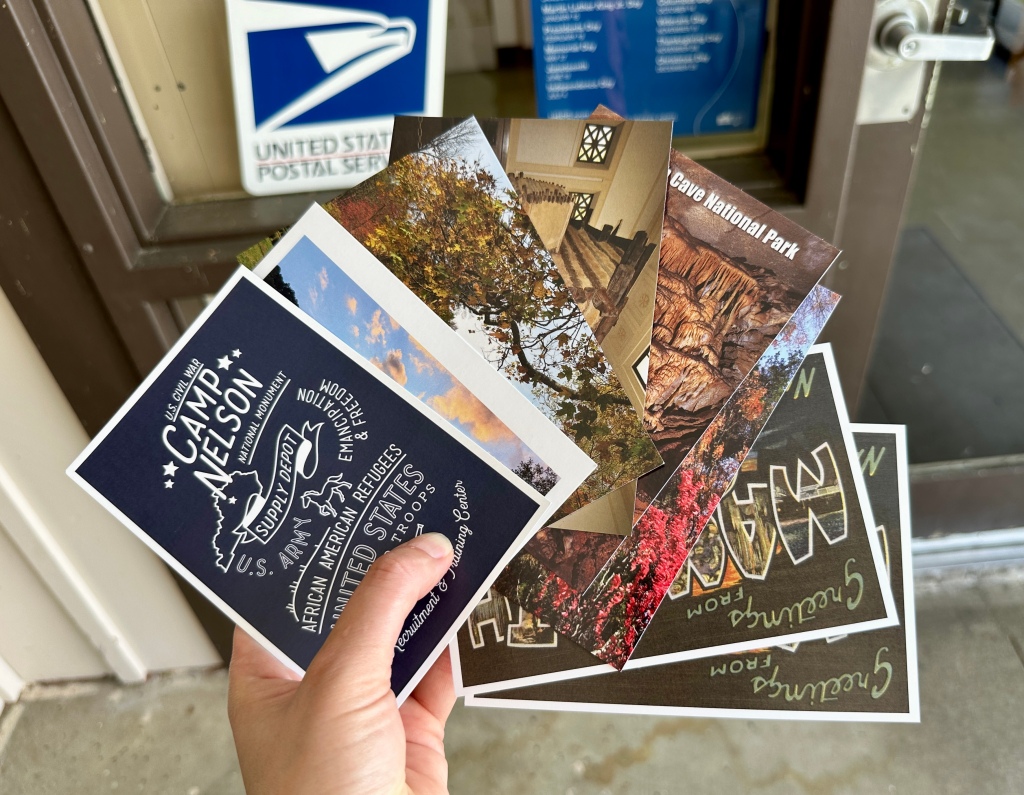
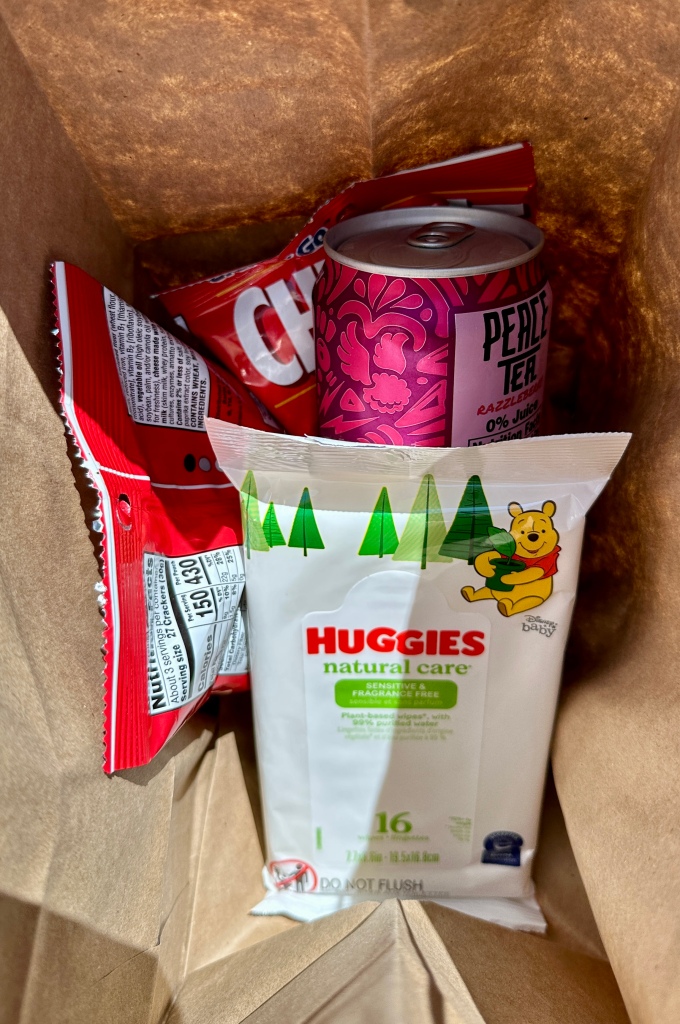
The tour I selected for my first day at Mammoth Cave was the Extended Historic Tour. At 2.25 hours long, the tour would take me through two miles of the cave. This tour is the same as the slightly shorter Historic Tour, but takes a side trip to the site of the 1840s experiment where sufferers of tuberculosis lived in the cave in an attempt to cure the disease.
My tour met under a stone canopy and Ranger Eric greeted us promptly. After going through the regulation safety talk, including warning us if a bat touches us he has to give us a card about rabies, Ranger Eric, along with his helper Ranger Josh, led us down the steep path to the historic entrance to Mammoth Cave. I really enjoyed Ranger Eric, who is a retired teacher, and his knowledge and his puns!
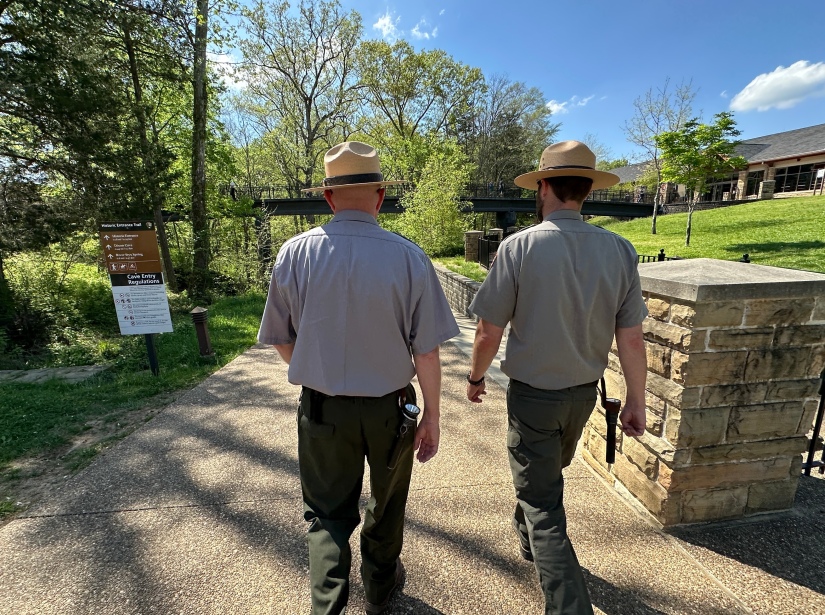

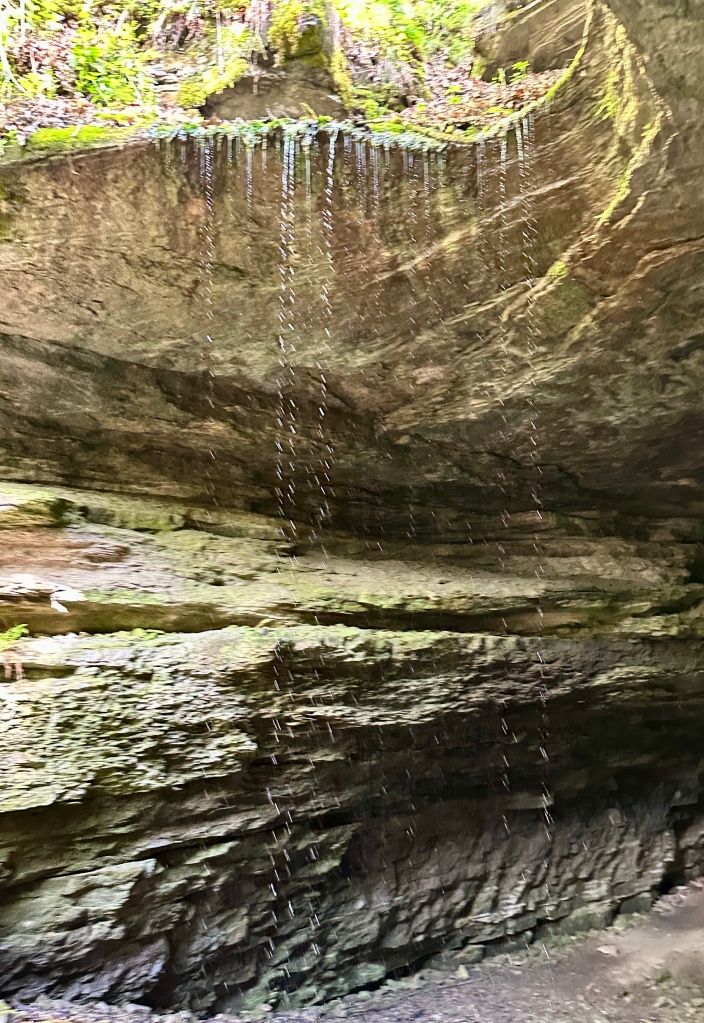
First impression: HOLY CRAP THIS CAVE IS HUGE.
Last fall I did tours of both Lehman Caves (Great Basin National Park in Nevada) and Timpanogos Cave (Utah), and I was definitely not prepared for the sheer size of Mammoth Cave. There were many parts I am pretty sure my tiny bungalow of a house could easily fit inside. Gone was a fear (at least during the early parts) of accidentally touching the cave!
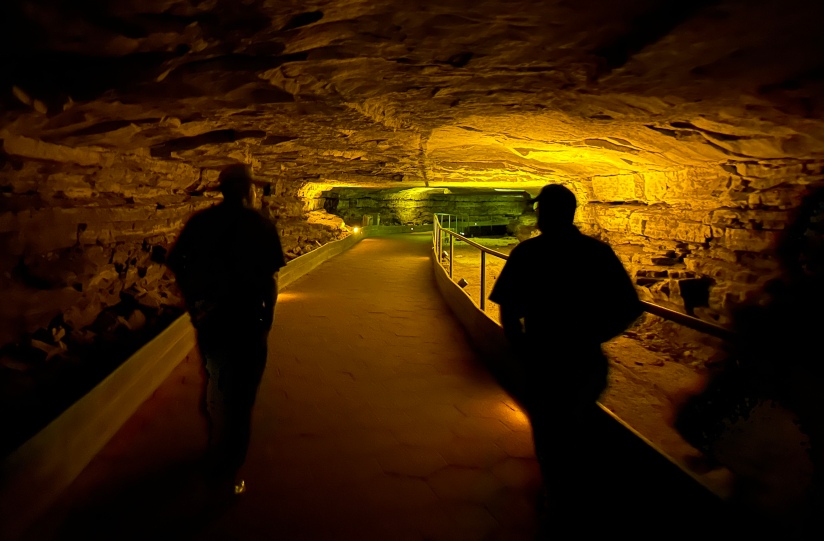
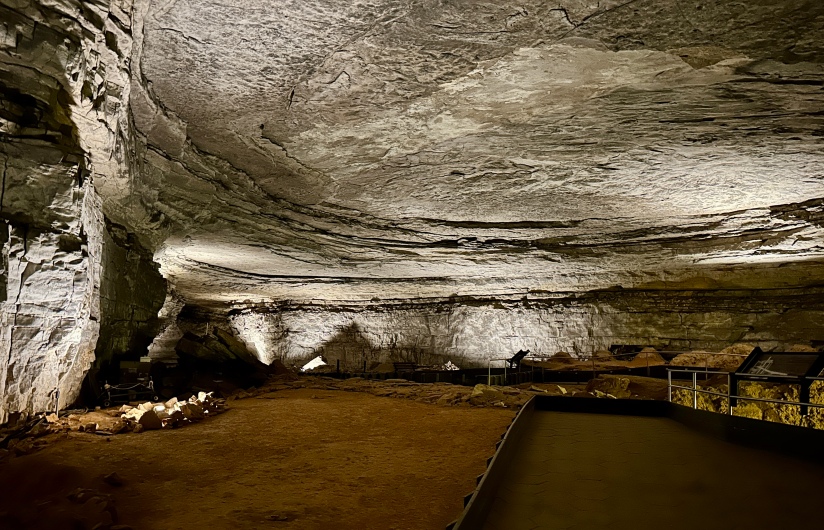
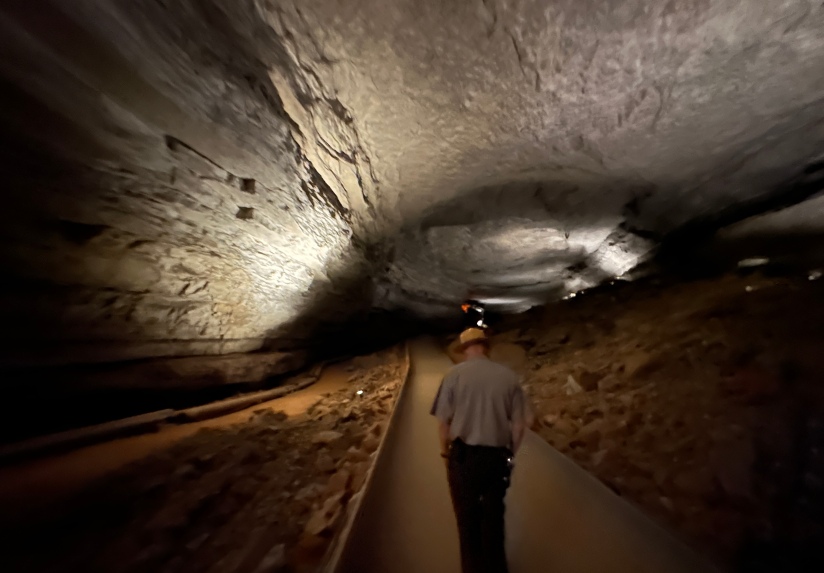
One of the first places we stopped and regrouped was the Rotunda, before proceeding down Broadway to the Methodist Church, where in the 1830s church services were conducted. Here Ranger Eric explained the mining that occurred in the cave for saltpeter (potassium nitrate) in the early 1800s. This is probably a good time to note that on both of my tours, it was more of a guided hike than a guided tour – the pace was decent and there was a lot of ground that is covered with only a handful of regrouping spots. Being two miles long, this makes sense that things are kept moving! Just a warning for those expecting a lot of stopping and resting :).
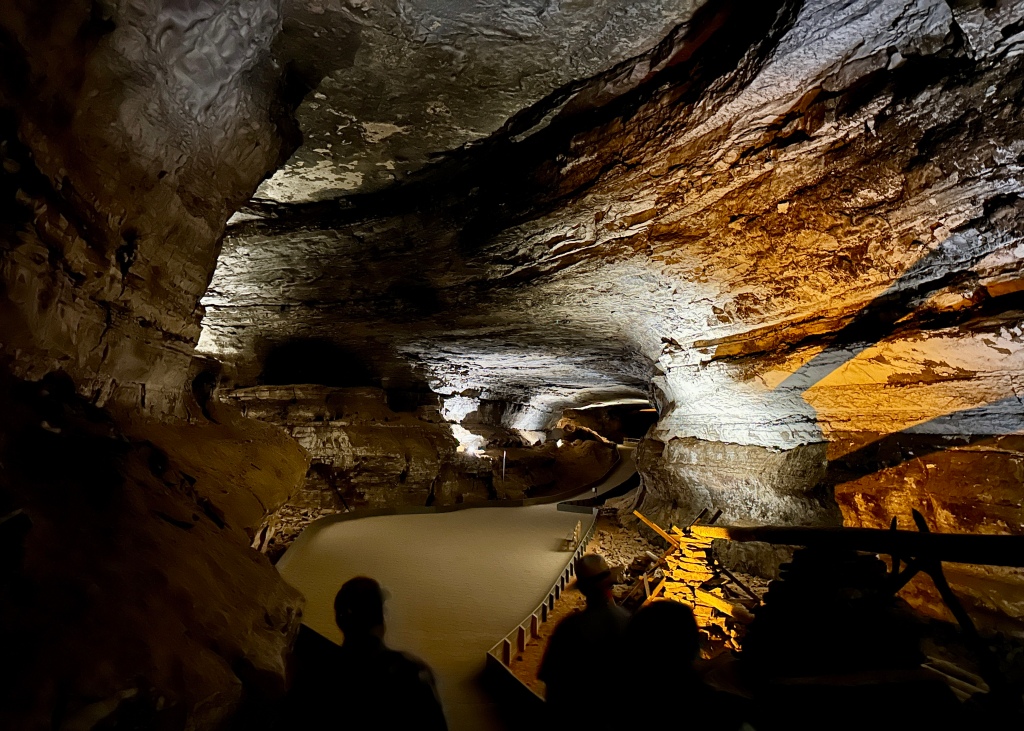
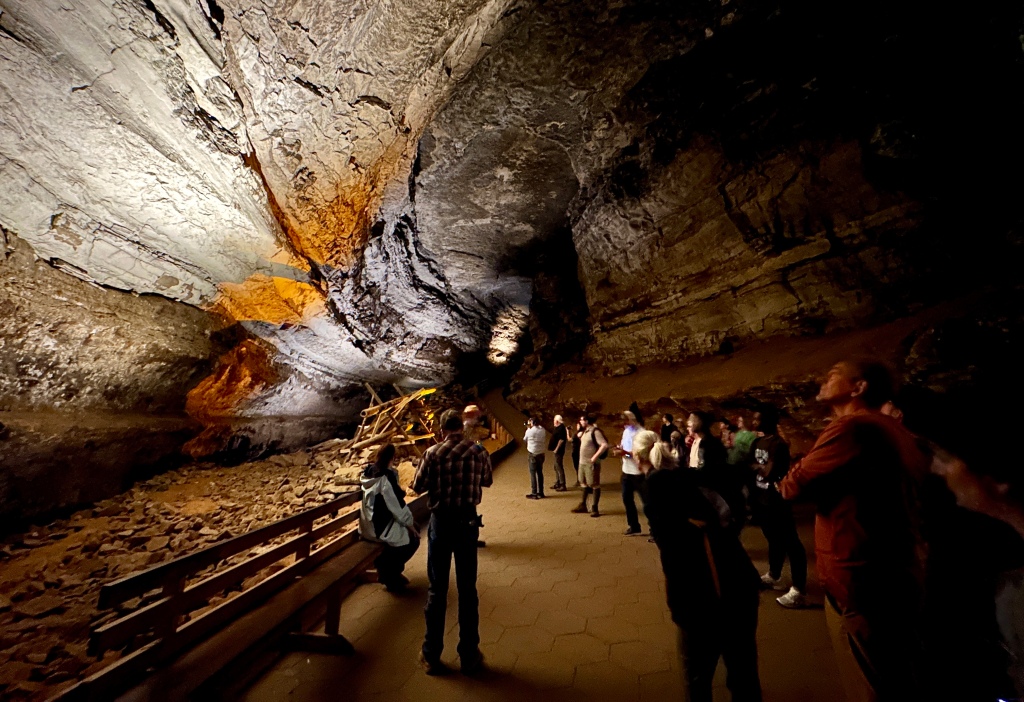
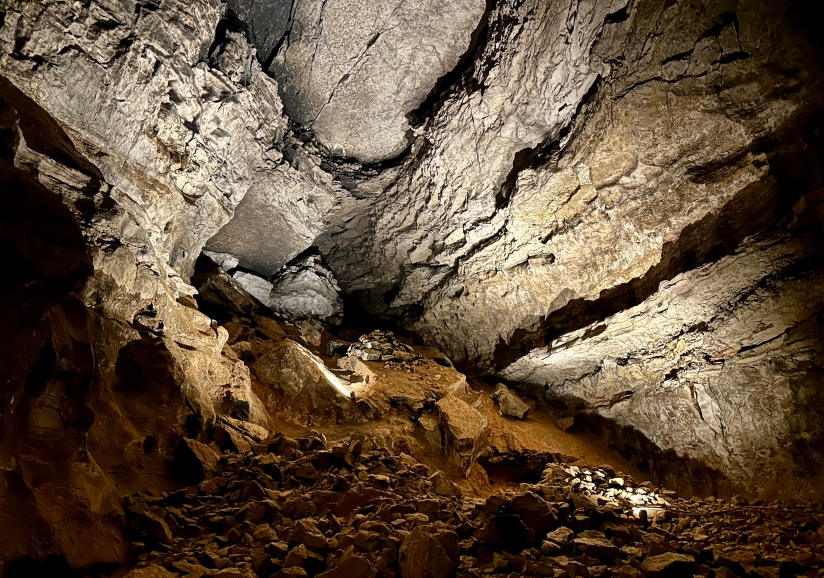
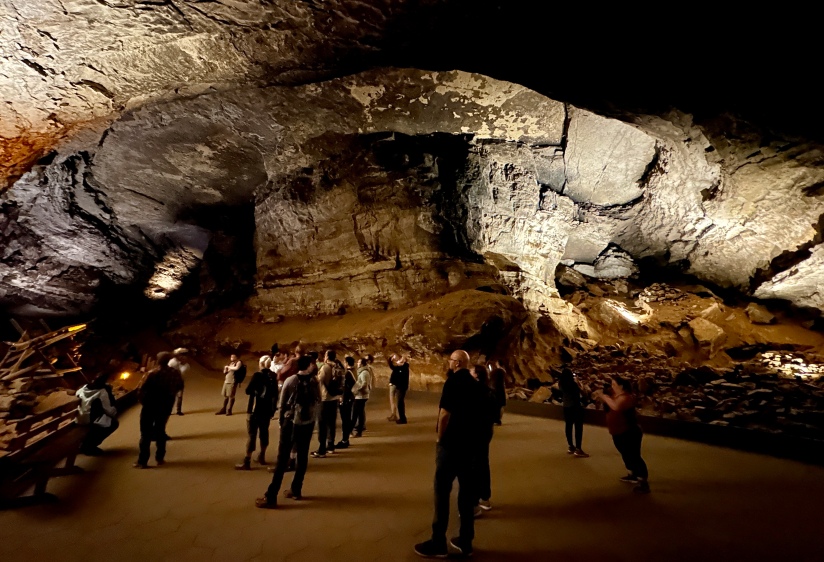
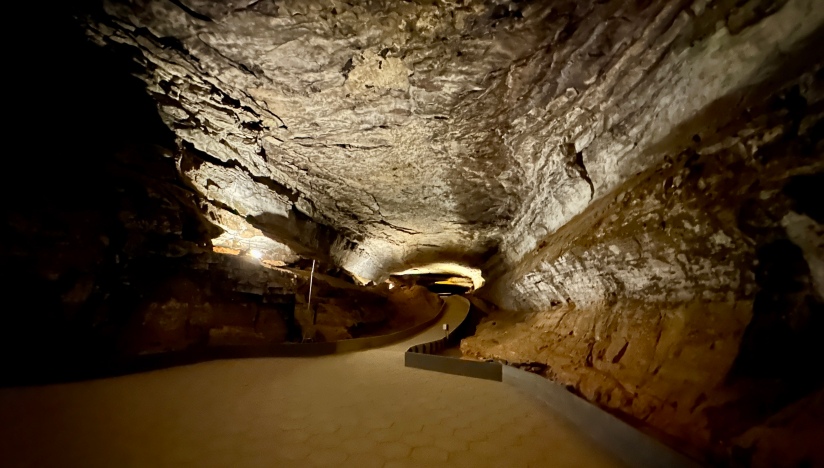

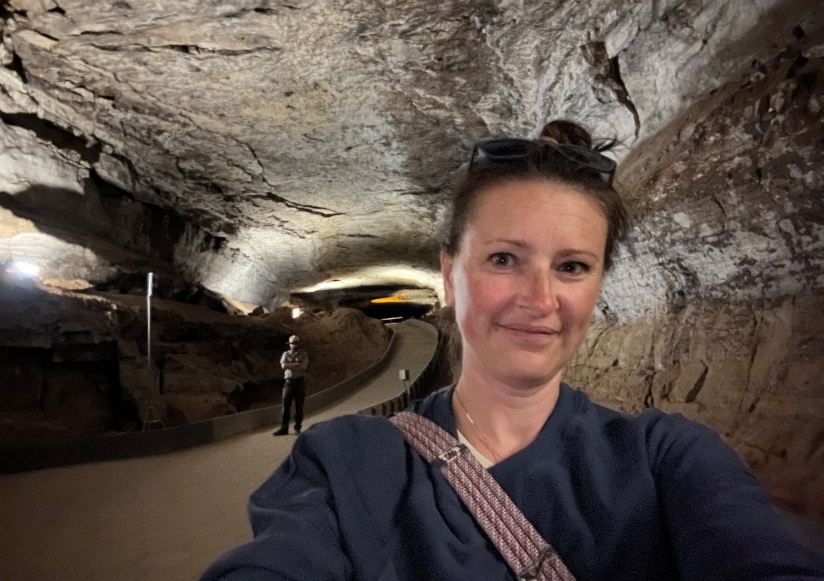
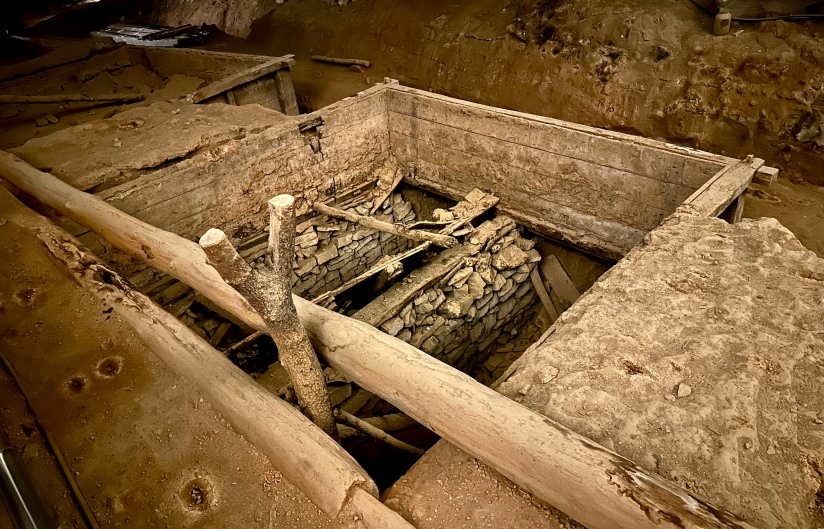
At Giant’s Coffin Ranger Eric took the opportunity to light a lantern to give us a perspective of what exploring the cave was like “back in the day.” This included turning the lights completely out, along with the lantern to show us exactly how dark the cave is.
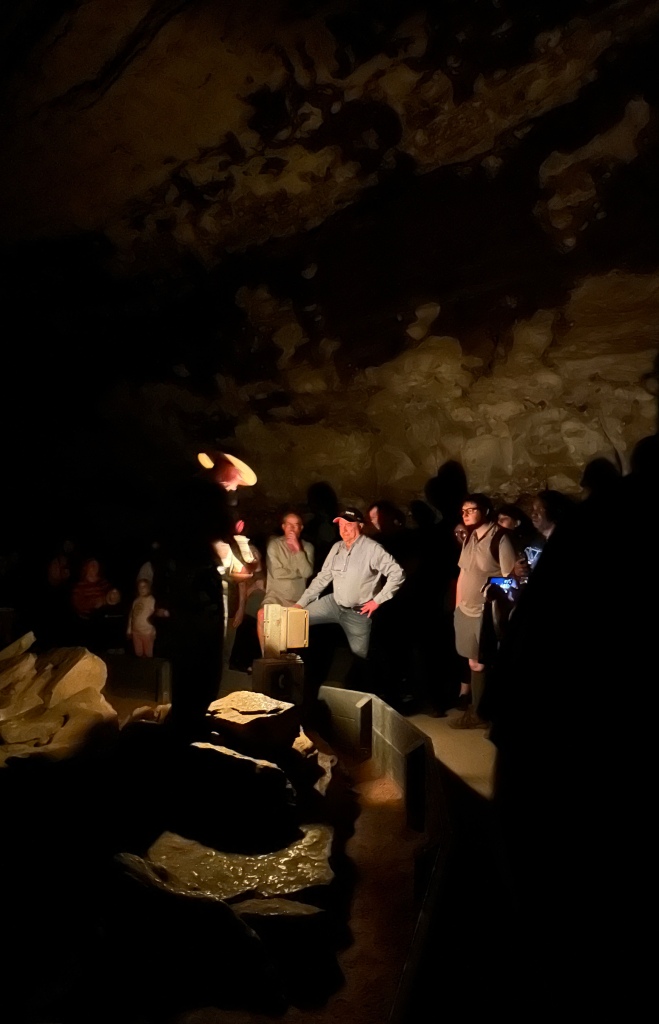
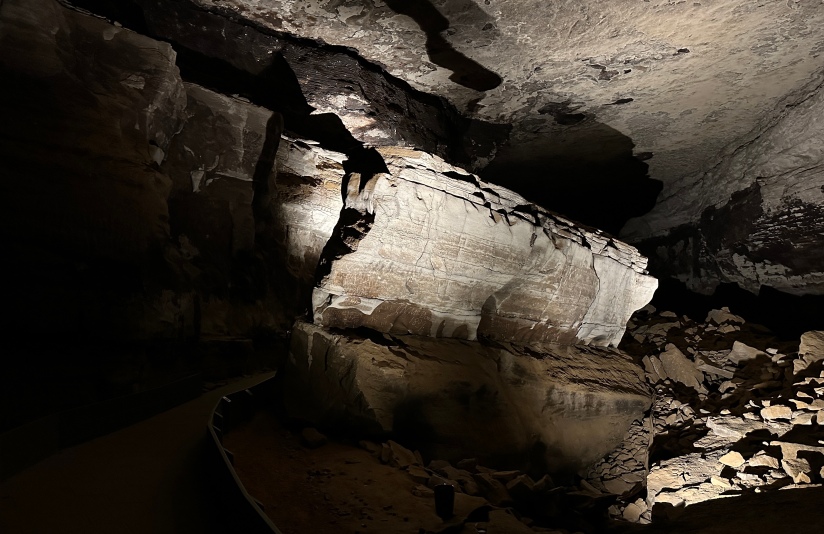
Time for our side quest to the tuberculosis huts! In 1839 Dr. John Croghan purchased Mammoth Cave for $10,000 after hearing miners and explorers state the cave air did wonders for their health. In 1842 sixteen tuberculosis patients took up residence in the cave. Though initially improving, within five months the experiment was ended and five of the patients had died. The damp, unventilated air of the cave (polluted further from the fires and torches the patients used to live) definitely did not heal their tuberculosis! (Mind you, at this time period, the cause of tuberculosis, called “consumption,” was not known as bacteria had not been identified.)
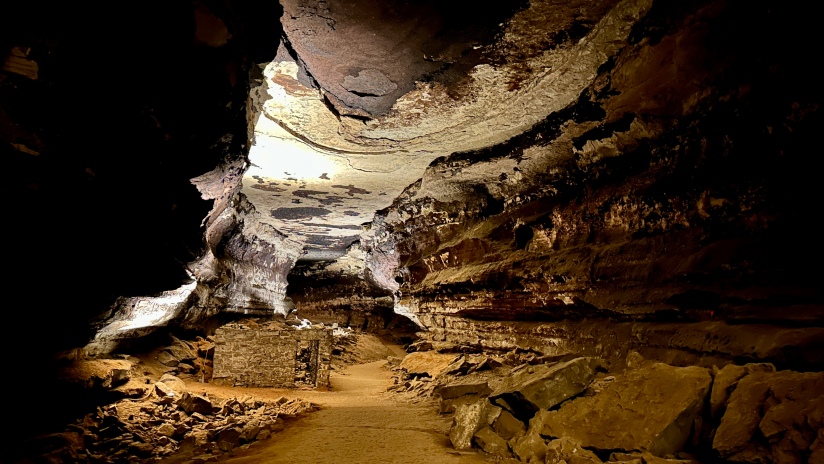
Side quest completed (with no TB ghosts spotted), we backtracked to Giant’s Coffin, and descended through Dante’s Gateway to the lower, tighter areas of the cave. Gone were the wide open caverns as passages narrowed and us taller folks took to stooping. These upcoming sections of the cave were just plain fun!

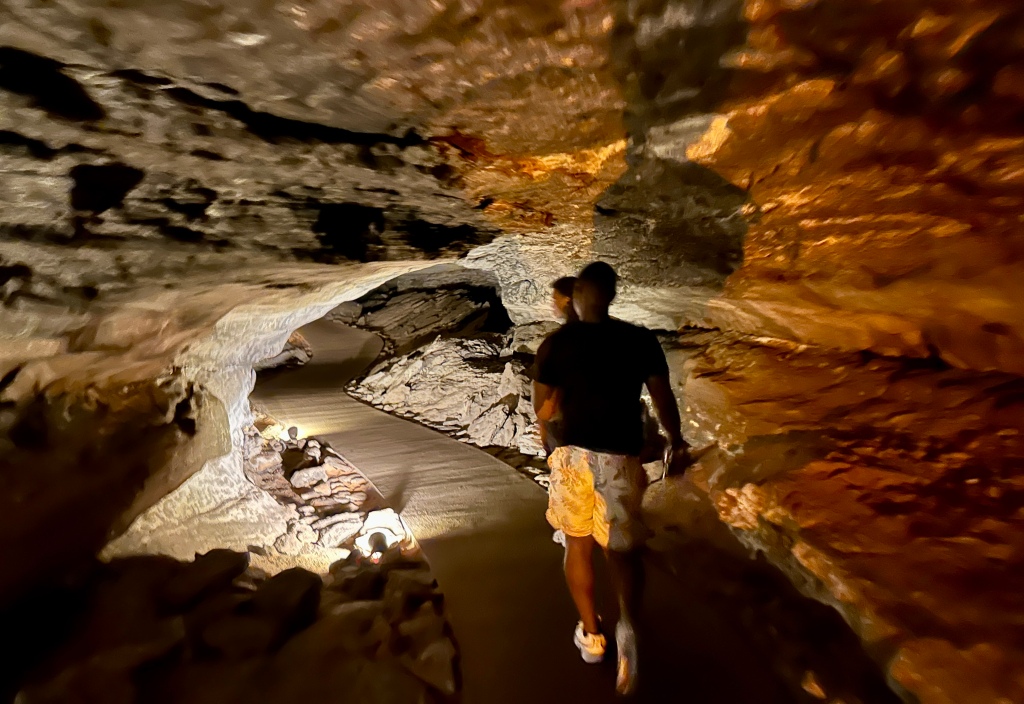
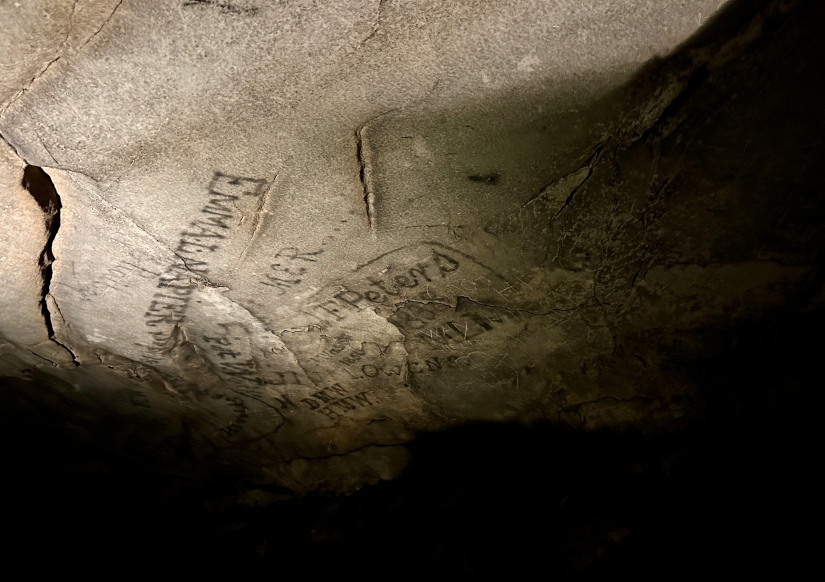
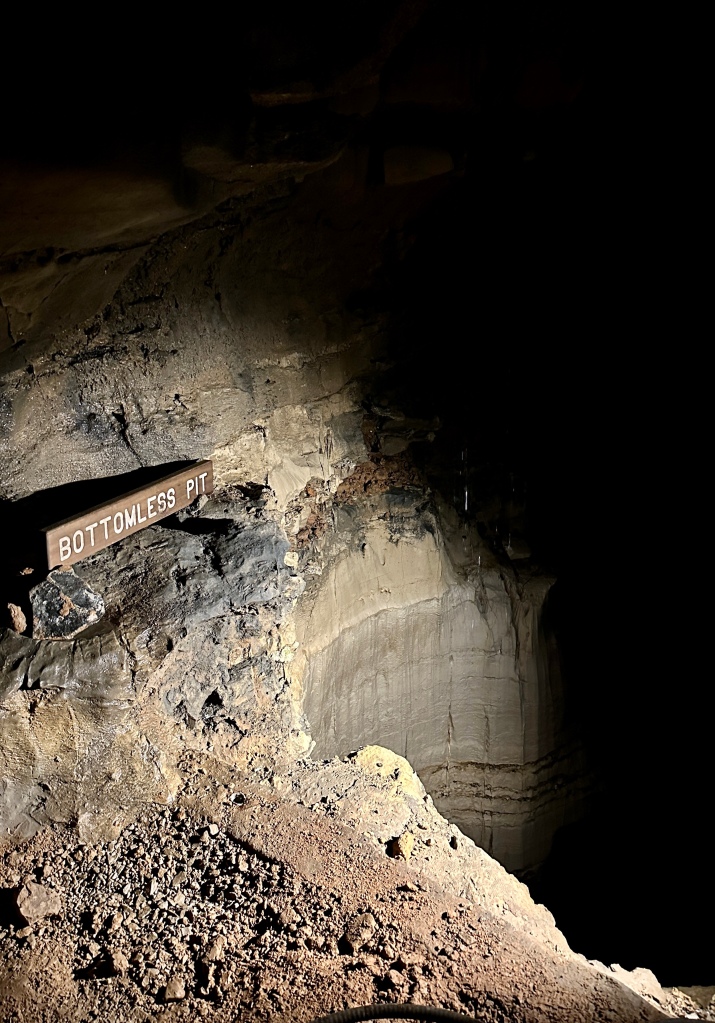
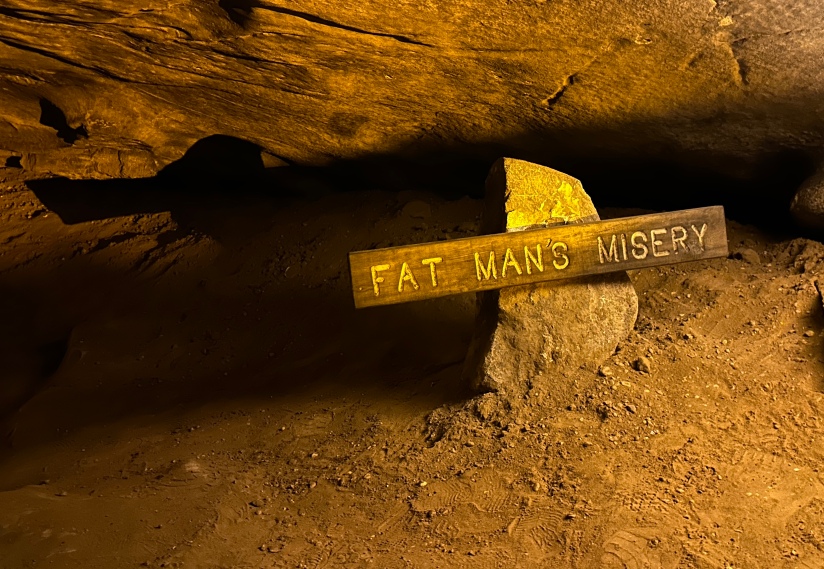
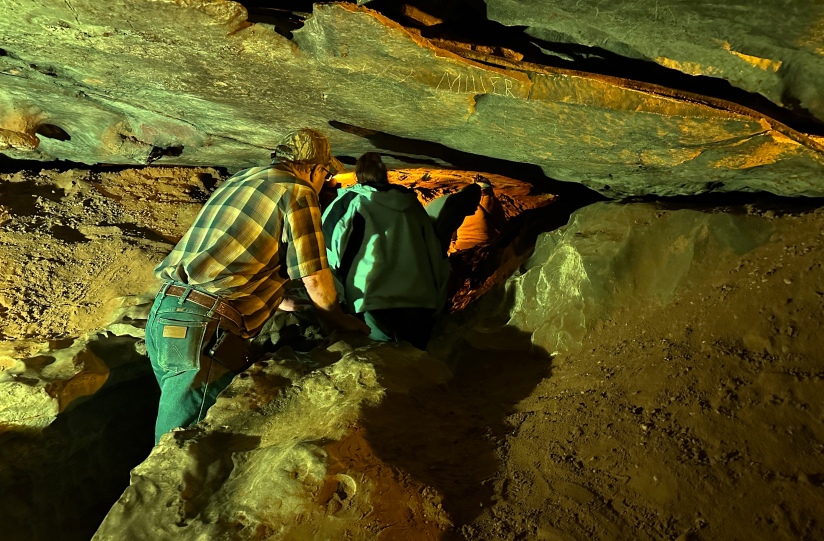
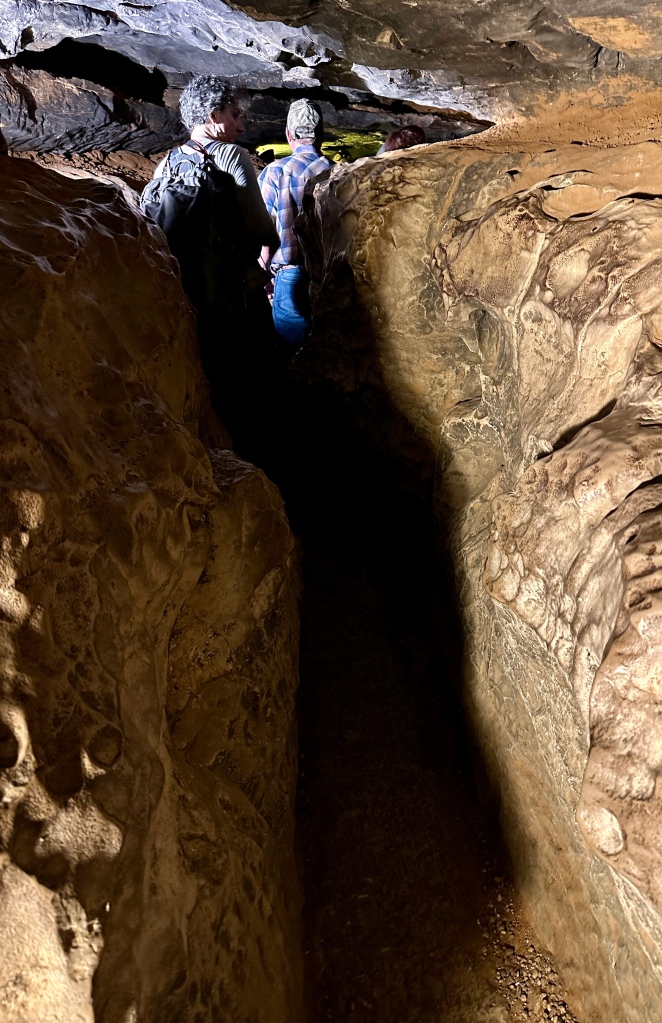

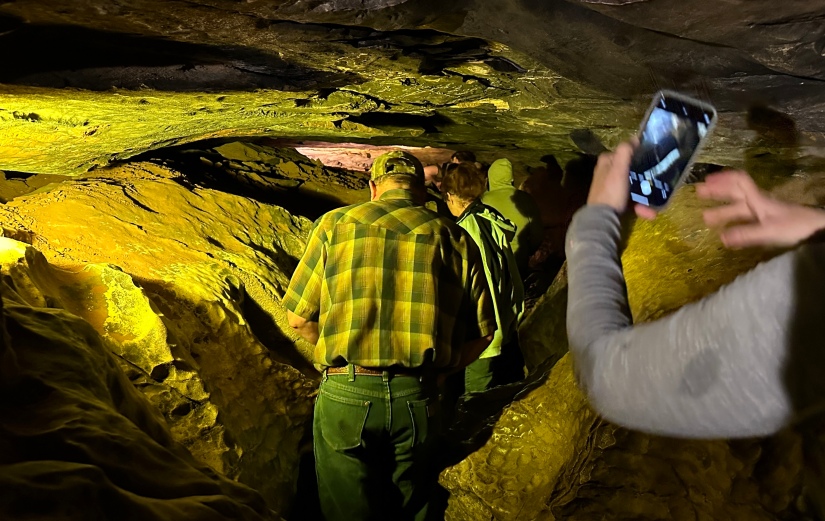
Fat Man’s Misery and Tall Man’s Misery conquered, we regrouped for final questions at the Great Relief Hall. Ranger Eric explained how flooding impacts the cave system, giving personal ancedotes of the height of flood waters he has seen in Great Relief Hall.
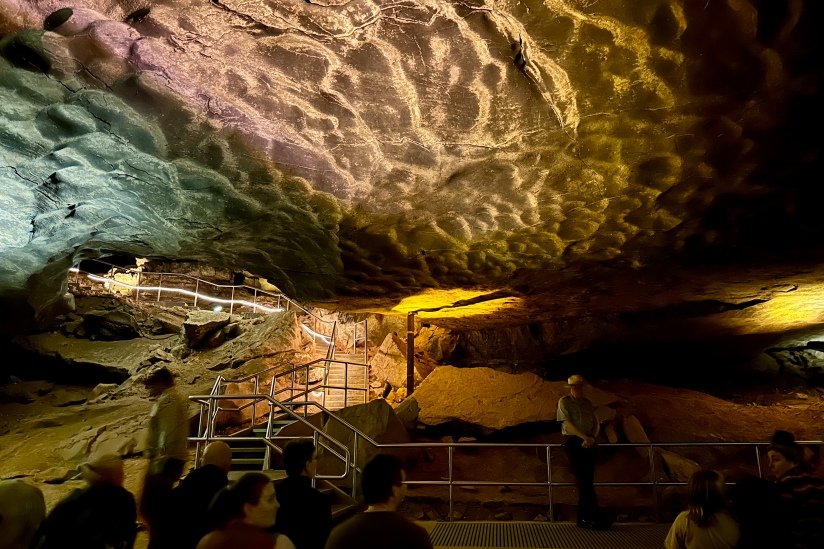
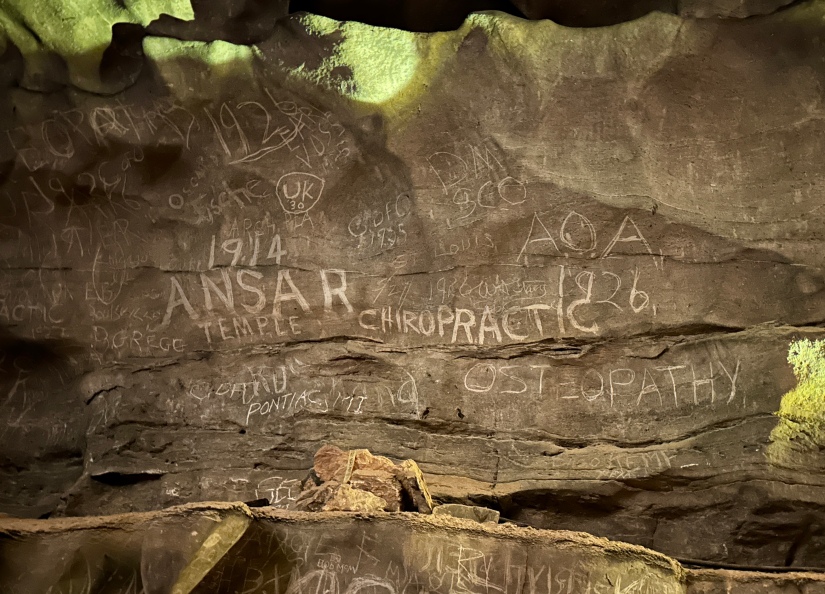
This tour ends with a bang (and 155 stairs) at Mammoth Dome, the tallest cave dome in this cave system. Starting with Crevice Pit at the base, the dome rises 190 feet to the top of Mammoth Dome.
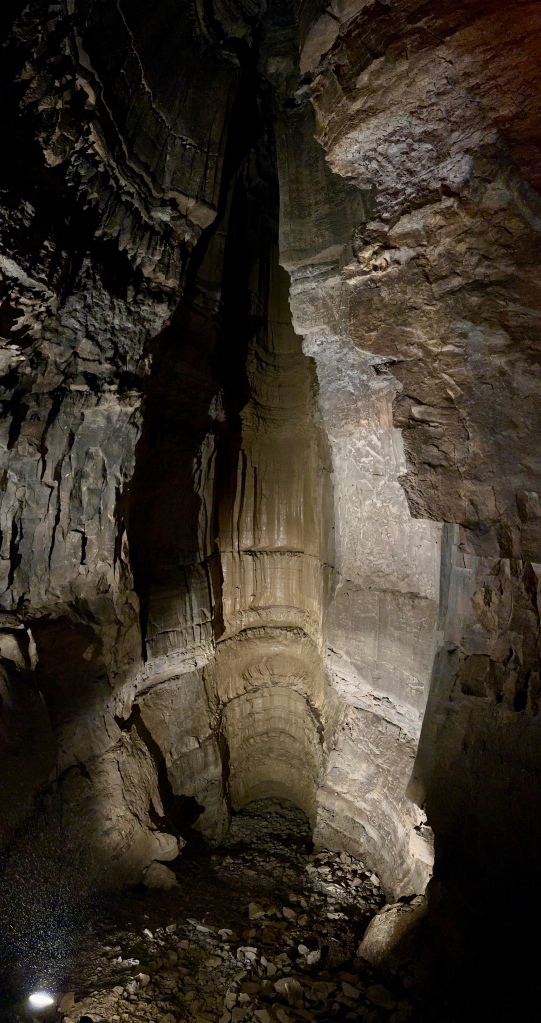
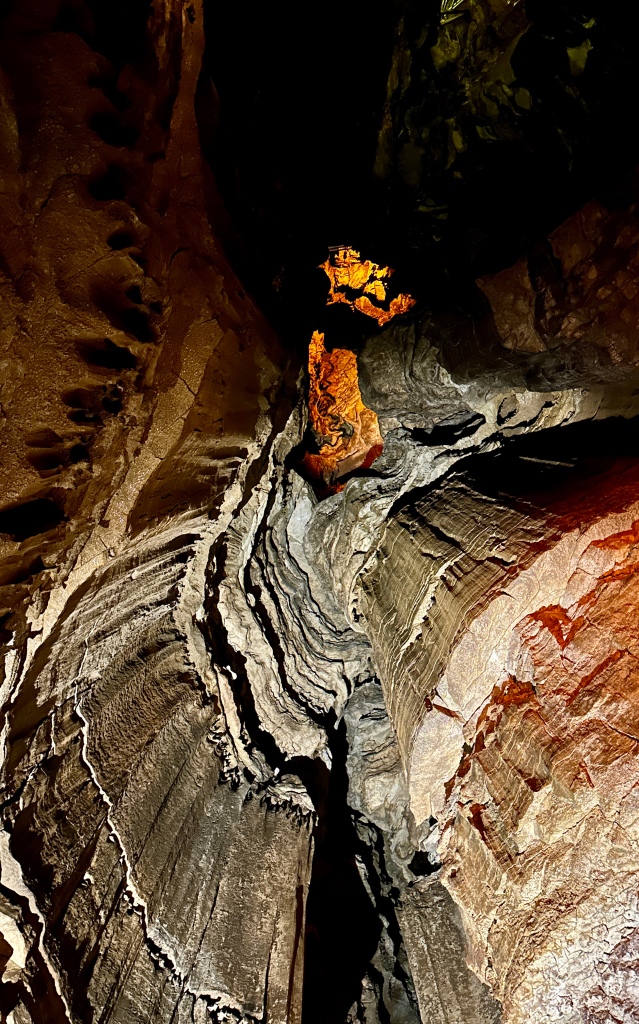
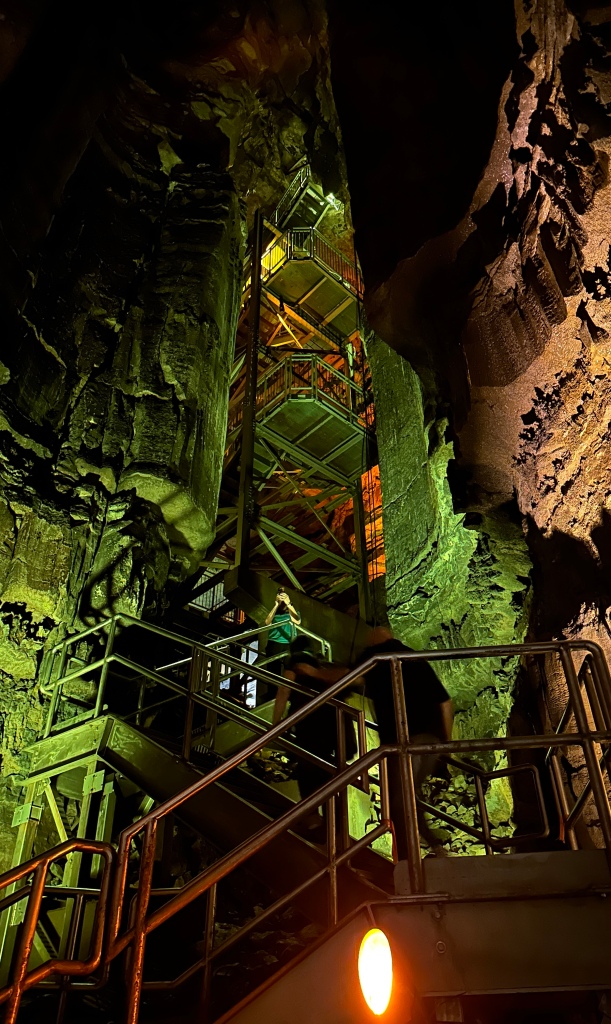
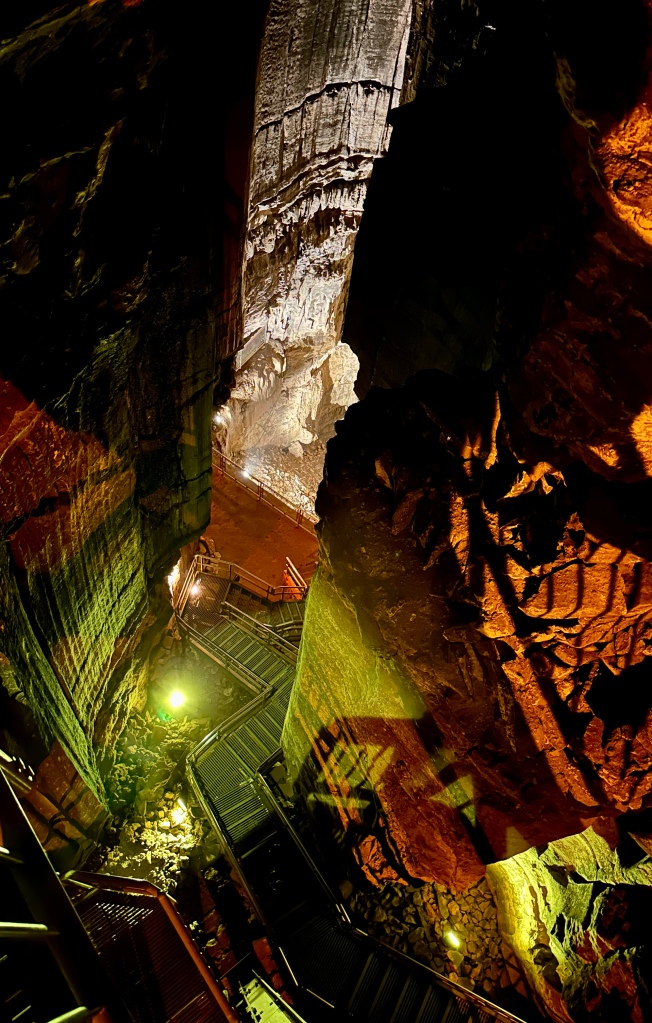
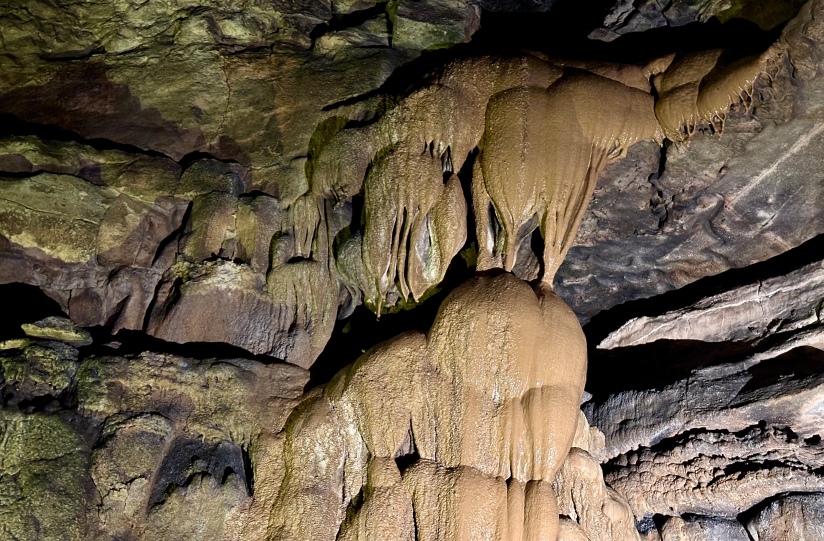
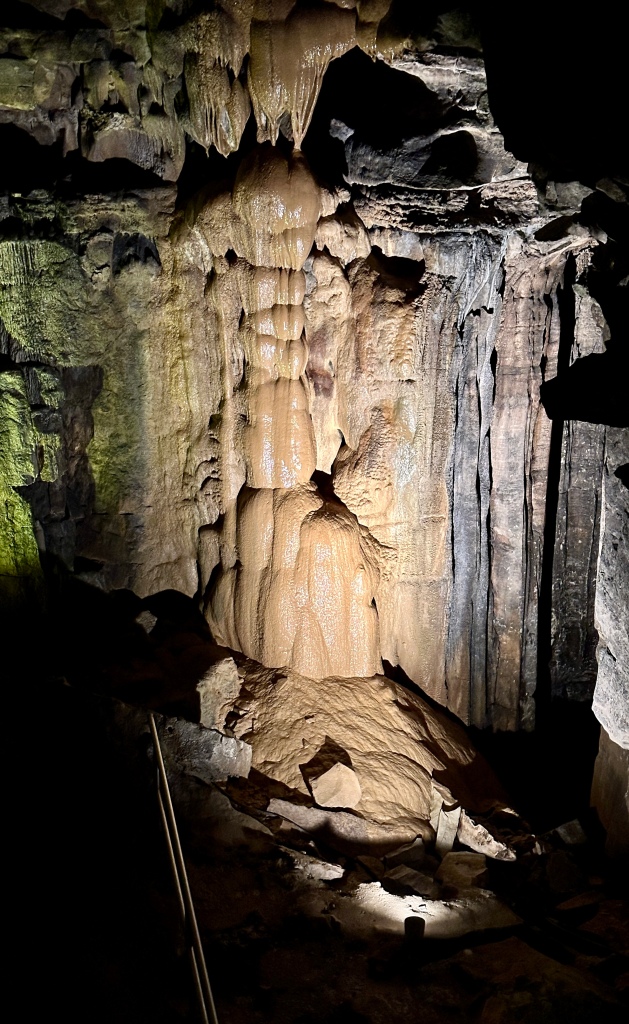
Little Bat Avenue and Audubon Avenue led us back to the Rotunda, completely the underground loop. I was delighted to see two bats during this stretch that were no bigger than my thumb!
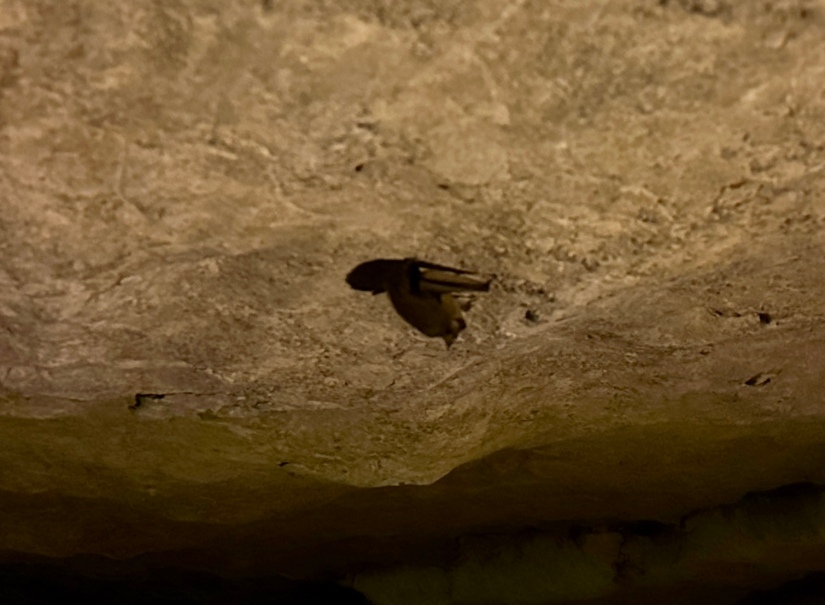
We exited out the historic entrance, and the hot, muggy air hit me in a wave. Everyone has to walk across decontamination mats at the end (leading me to ponder if the stuff would make my feet fall off… I was in sandals after all! Spoiler alert – feet are okay!), though to any readers going from Mammoth Cave to a cave in the western US, please choose different footwear that has never been in a cave. Most of our caves in the western US will not allow anything (shoes, clothes, cameras, anything) that has been in a cave previously, especially one with detected white nose syndrome.

There is a mind boggling amount of cave tours offered at Mammoth Cave – something for everyone, including tours that are accessible for wheelchair users! Though this national park does offer above-ground activities, including hiking and mountain biking, I definitely believe a visit is not complete without doing at least one cave tour!

And that was it! By now I had worked up an appetite, so it was back to my campsite to boil some water for a Mountain House spaghetti dinner before retiring to my tent for my reading.

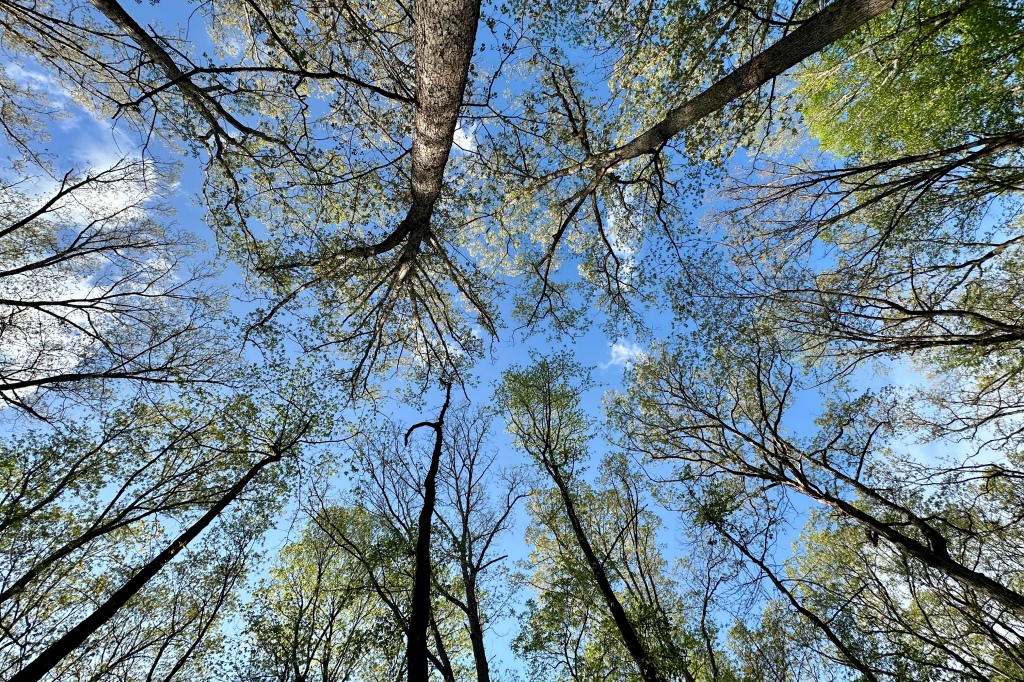


You are certainly experiencing amazing things. We’ve been to Mammoth caverns (a long time ago) but not to Abraham Lincoln birthplace historical park. Your photos are great. We have no photos of mammoth caverns.
LikeLiked by 1 person
Cell phone cameras have come so far! A few years ago I wouldn’t have bothered with trying to take photos in a cave, but now I can get some ok ones if I hold still 🙂
LikeLiked by 1 person
Yes you are right. They have come a long way. Back when we visited mammoth caverns we had no cell phones but I had a small regular camera. The photos were not good but not terrible but I’ve lost them all.
LikeLiked by 1 person